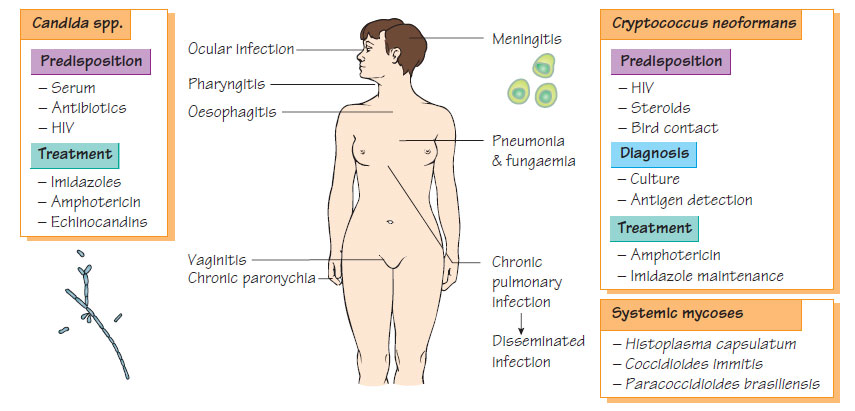Fungal infection itching. Fungal Skin Infections: Types, Symptoms, Treatments, and Prevention Strategies
What are the most common types of fungal skin infections. How can you identify the symptoms of fungal infections on your skin. What are the most effective treatments for fungal skin infections. How can you prevent fungal infections from occurring or recurring.
Understanding Fungal Skin Infections: Causes and Risk Factors
Fungal skin infections occur when fungi multiply excessively on or within the skin. These microscopic organisms are ubiquitous, found in soil, air, and even inside the human body. While fungi are generally harmless, certain conditions can lead to their overgrowth, resulting in infections.
Fungi thrive in warm, moist environments with poor air circulation. This is why fungal infections often develop in areas such as:
- Between the toes
- In the groin area
- Under the breasts
- In skin folds
Several risk factors can increase your susceptibility to fungal skin infections:
- Excessive sweating
- Prolonged exposure to moisture
- Wearing tight, non-breathable clothing
- A weakened immune system
- Certain medical conditions, such as diabetes
- Use of broad-spectrum antibiotics
How do fungal infections spread? Fungal infections are often contracted through direct contact with infected individuals, animals, or contaminated surfaces. Common sources of infection include:

- Shared gym equipment
- Public showers and locker rooms
- Hot tubs and saunas
- Contaminated clothing or towels
Common Types of Fungal Skin Infections and Their Characteristics
While there are millions of fungal species, only a few hundred can cause infections in humans. Among these, even fewer are dermatophytes, which specifically affect the skin, nails, and hair. Let’s explore some of the most common fungal skin infections:
Yeast Infections (Candidiasis)
Yeast infections, primarily caused by Candida albicans, occur when this naturally present fungus overgrows on the skin. These infections typically develop in warm, moist areas and can manifest as:
- Redness or discoloration
- Intense itching
- Burning sensation
- Stinging
- Small, acne-like bumps
Common sites for yeast infections include skin folds, under the breasts, and in the groin area. In infants, yeast infections can cause diaper rash.
Ringworm (Tinea Corporis)
Despite its name, ringworm is a fungal infection, not a parasitic one. It’s characterized by circular, ring-shaped rashes with raised edges and clear centers. Ringworm is highly contagious but generally not serious. Symptoms include:

- Ring-shaped, red or discolored patches
- Slightly raised, scaly borders
- Itching
- Spreading rash
Ringworm can affect various parts of the body, including the scalp (tinea capitis), feet (athlete’s foot), and groin area (jock itch).
Diagnosing Fungal Skin Infections: Methods and Procedures
Accurate diagnosis is crucial for effective treatment of fungal skin infections. Healthcare providers employ various methods to identify these infections:
Visual Examination
Many fungal skin infections can be diagnosed through a simple visual inspection by a healthcare professional. The characteristic appearance of conditions like ringworm or yeast infections often allows for a straightforward diagnosis.
Skin Scraping and Microscopy
For a more definitive diagnosis, a doctor may perform a skin scraping. This involves gently scraping the affected area to collect skin cells, which are then examined under a microscope. This method can reveal the presence of fungal elements, confirming the diagnosis.

Fungal Culture
In some cases, a fungal culture may be necessary. This involves taking a sample from the infected area and allowing it to grow in a laboratory setting. While this method takes longer, it can identify the specific type of fungus causing the infection, which can guide treatment decisions.
Wood’s Lamp Examination
Some fungal infections fluoresce under ultraviolet light. A Wood’s lamp examination can help detect certain types of fungal infections, particularly those caused by dermatophytes.
How long does it take to diagnose a fungal skin infection? While visual examinations and skin scrapings can provide quick results, fungal cultures may take several days to weeks for conclusive results.
Treatment Options for Fungal Skin Infections: From OTC to Prescription Remedies
The treatment of fungal skin infections depends on the type and severity of the infection. Here are some common treatment approaches:
Topical Antifungal Medications
For many fungal skin infections, topical antifungal medications are the first line of treatment. These include:

- Clotrimazole
- Miconazole
- Terbinafine
- Ketoconazole
- Nystatin
These medications are available in various forms, including creams, lotions, and powders. They work by either killing the fungi or preventing their growth.
Oral Antifungal Medications
In more severe cases or when topical treatments are ineffective, oral antifungal medications may be prescribed. Common oral antifungals include:
- Fluconazole
- Itraconazole
- Terbinafine
These medications are typically reserved for more extensive infections or those that don’t respond to topical treatments.
Combination Therapies
In some cases, a combination of treatments may be recommended. For instance, a corticosteroid cream might be used alongside an antifungal to reduce inflammation and itching.
Home Remedies and Lifestyle Changes
In addition to medical treatments, certain home remedies and lifestyle changes can support healing:
- Keeping the affected area clean and dry
- Wearing loose, breathable clothing
- Using antifungal powders to reduce moisture
- Avoiding sharing personal items like towels or clothing
How long does it take for fungal skin infections to clear up? The duration of treatment can vary depending on the type and severity of the infection. Some infections may clear up within a week or two with proper treatment, while others may require several weeks to months of consistent therapy.
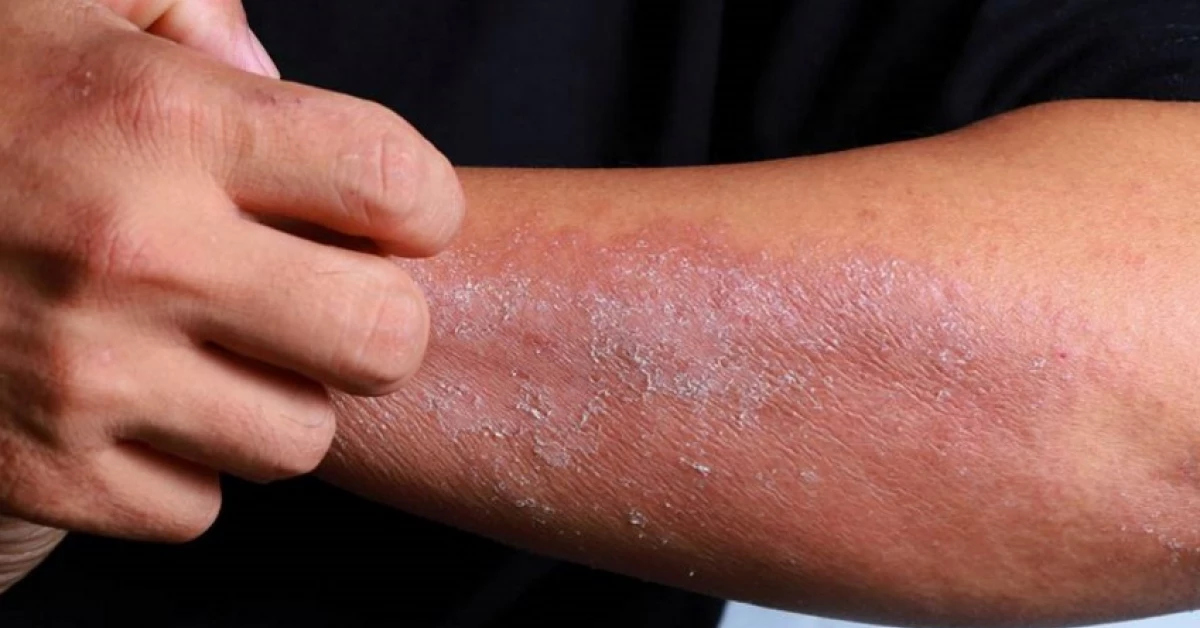
Prevention Strategies: Keeping Fungal Skin Infections at Bay
Preventing fungal skin infections is often easier than treating them. Here are some effective strategies to reduce your risk:
Maintain Good Hygiene
Regular bathing and thorough drying, especially in skin folds and between toes, can significantly reduce the risk of fungal infections. Use mild, non-irritating soaps and avoid harsh scrubbing, which can damage the skin barrier.
Keep Skin Dry
Moisture creates an ideal environment for fungal growth. After bathing or sweating, ensure you dry your skin thoroughly. Using talcum powder or antifungal powders in prone areas can help absorb excess moisture.
Wear Appropriate Clothing
Choose breathable, loose-fitting clothing, especially in hot and humid conditions. Avoid staying in damp or sweaty clothes for extended periods. If you exercise, change out of your workout clothes promptly.
Protect Your Feet
Wear clean, dry socks and change them regularly, especially if your feet tend to sweat. In public areas like locker rooms or swimming pools, wear sandals or shower shoes to avoid direct contact with potentially contaminated surfaces.

Practice Safe Sharing
Avoid sharing personal items like towels, combs, or clothing with others. These items can harbor fungi and spread infections.
Boost Your Immune System
A strong immune system can help fight off fungal infections. Maintain a balanced diet, get regular exercise, manage stress, and get adequate sleep to support your overall health and immunity.
How often should you implement these preventive measures? These practices should become part of your daily routine, especially if you’re prone to fungal infections or frequently exposed to high-risk environments.
When to Seek Medical Attention: Recognizing Serious Fungal Infections
While many fungal skin infections are mild and can be treated at home, some situations warrant professional medical attention. Here are some signs that you should consult a healthcare provider:
Persistent or Worsening Symptoms
If your symptoms don’t improve after a week of over-the-counter treatment, or if they worsen despite treatment, it’s time to see a doctor. This could indicate a resistant infection or misdiagnosis.
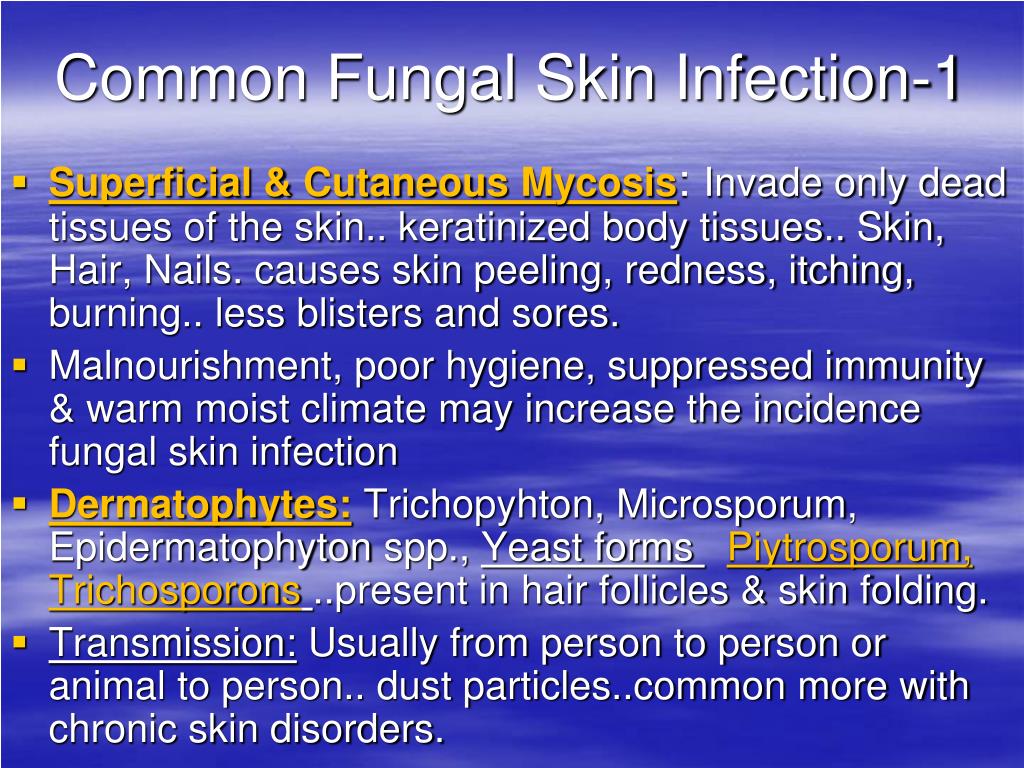
Widespread Infection
If the infection spreads to large areas of your body or multiple sites, professional evaluation is necessary. Extensive infections may require systemic treatment.
Signs of Secondary Bacterial Infection
Watch for signs of a secondary bacterial infection, such as:
- Increased redness or warmth around the affected area
- Swelling
- Pus or discharge
- Fever
These symptoms may indicate a more serious condition that requires immediate attention.
Recurrent Infections
If you experience frequent fungal infections, it’s important to consult a healthcare provider. Recurrent infections could signal an underlying health issue or immune system problem.
Infections in High-Risk Individuals
People with weakened immune systems, diabetes, or other chronic health conditions should seek medical attention for any suspected fungal infection, as they’re at higher risk for complications.
How quickly should you seek medical attention for a suspected serious fungal infection? If you notice any of these signs, it’s best to consult a healthcare provider within 24 to 48 hours to prevent potential complications and ensure proper treatment.

The Impact of Fungal Skin Infections on Quality of Life
While fungal skin infections are generally not life-threatening, they can significantly impact an individual’s quality of life. Understanding these effects is crucial for comprehensive management and support.
Physical Discomfort
The most immediate impact of fungal skin infections is physical discomfort. Symptoms like itching, burning, and stinging can be persistent and distressing, affecting daily activities and sleep quality.
Emotional and Psychological Effects
Visible skin conditions can lead to emotional distress and self-consciousness. Some individuals may experience:
- Reduced self-esteem
- Social anxiety
- Depression
- Frustration with chronic or recurrent infections
Impact on Activities
Fungal infections can limit participation in certain activities. For example:
- Athletes may need to avoid training or competition
- Individuals with foot infections might limit walking or standing
- Those with visible infections may avoid social situations or intimate relationships
Economic Impact
The cost of treating fungal infections, especially chronic or recurrent cases, can be significant. This includes expenses for medications, doctor visits, and potentially missed work days.

Lifestyle Modifications
Managing fungal infections often requires lifestyle changes, which can be challenging to maintain long-term. These may include:
- Altering clothing choices
- Changing hygiene routines
- Avoiding certain activities or environments
How can individuals cope with the impact of fungal skin infections on their quality of life? Seeking support from healthcare providers, joining support groups, and practicing stress-reduction techniques can help manage both the physical and emotional aspects of fungal skin infections.
By understanding the various aspects of fungal skin infections – from causes and symptoms to treatment and prevention – individuals can better manage these conditions and minimize their impact on daily life. Remember, while fungal skin infections are common, they are also treatable and often preventable with proper care and attention.
Types, Treatment, Risk Factors, More
Fungi live everywhere. They can be found in soil, in the air, or even inside the body. They can also be found on plants, surfaces, or the skin. These microscopic organisms typically don’t cause any problems for your skin unless they multiply faster than normal or penetrate the skin through a cut or lesion.
Since fungi thrive in warm, moist environments, fungal skin infections can often develop in sweaty or damp areas that don’t get much airflow. Some examples include the feet, groin, and folds of the skin.
These infections usually appear as a scaly rash or as discolored and often itchy skin.
You often acquire a fungal skin infection through direct contact. This can include coming into contact with fungi in or on:
- another person
- an animal
- items such as clothing
- gyms
- gym mats, like those used in wrestling
- hot tubs
- saunas and steam rooms
Some fungal skin infections are very common. Although the infection can be uncomfortable and possibly contagious, it’s typically not serious unless you’re immunocompromised.
Although the infection can be uncomfortable and possibly contagious, it’s typically not serious unless you’re immunocompromised.
Did you know?
Although there are millions of species of fungi, just a few hundred of them can actually cause infections in humans, according to the Centers for Disease Control and Prevention (CDC).
What’s more, only a few of those species are dermatophytes, which can affect the skin, nails, and hair. Nondermatophyte fungi can affect the nails but are more likely to occur in other places, such as the lungs or brain.
Many common fungal infections can affect the skin.
Yeast infection (Candida skin infection)
Yeast is a type of fungus.
A yeast called Candida is naturally present on the skin and inside the human body. When it overgrows, an infection can occur, including on the skin. The most common species of Candida is Candida albicans.
Other names for a yeast infection of the skin include:
- a Candida skin infection
- a candidal skin infection
- cutaneous candidiasis
- candidiasis of the skin
The infection occurs in warm, moist, and poorly ventilated areas. Areas that are typically infected include the folds of the buttocks (as in certain types of diaper rash) and under the breasts.
Areas that are typically infected include the folds of the buttocks (as in certain types of diaper rash) and under the breasts.
The symptoms of a yeast infection of the skin can include:
- a red or discolored rash
- itching
- stinging
- burning
- acne-like bumps around the rash
Other yeast infections
The mucous membranes are another common site of fungal infections. Some examples of yeast infections in the mucous membranes are vaginal yeast infections and oral thrush.
How it’s diagnosed
A primary care doctor should be able to diagnose a yeast infection of the skin during a physical examination. They may also swab the skin and use a skin culture to confirm that yeast is the organism causing your symptoms.
If you see a dermatologist instead, they may perform a skin scraping of the rash and then view the sample under a microscope to determine if there’s Candida growth.
How it’s treated
An important step in treating any yeast infection is keeping the skin clean and dry.
Some yeast infections will go away on their own. Prescription and over-the-counter (OTC) antifungal drugs are also available. These drugs can either kill fungi directly or prevent them from growing and thriving.
Topical versions include:
- clotrimazole
- econazole
- ketoconazole
- nystatin
- oxiconazole
To help reduce itching, you can also use a corticosteroid cream such as hydrocortisone.
Powders may help you keep your skin dry. It’s important to apply them 2 to 3 hours before or after applying any creams.
If the infection doesn’t resolve or improve, a doctor may prescribe oral antifungal medications, such as:
- fluconazole (Diflucan)
To help treat diaper rash, consider using zinc oxide creams to soothe your baby’s skin. OTC options include products from the brands:
- A+D
- Balmex
- Desitin
- Triple Paste
Home remedies such as changing diapers more frequently and using disposable diapers may also relieve symptoms.
The best disposable diapers
Check out our reviews of the best disposable diapers on the market.
Was this helpful?
Ringworm of the body (tinea corporis)
Ringworm is a common fungal skin infection. It’s highly contagious but not serious.
Despite its name, ringworm is caused by a fungus and not a worm. It typically occurs on the torso and limbs, in a subtype known as ringworm of the body (tinea corporis). Ringworm on other areas of the body can go by different names, such as jock itch and athlete’s foot.
The main symptom of ringworm is a ring-shaped rash with slightly raised edges. The skin inside these circular rashes usually looks healthy. The rash can spread and is often itchy.
Ringworm can come from petting an animal infected with the fungus or from gyms and gym mats.
How it’s diagnosed
A doctor can usually diagnose ringworm by sight or after performing a skin scraping.
Some doctors may also perform a fungal culture to help them determine a diagnosis.
How it’s treated
Ringworm of the body that’s limited to a few areas can usually be treated with a topical antifungal medication, such as:
- clotrimazole (Lotrimin AF Ringworm Cream)
- econazole
- ketoconazole (Extina, Ketozole)
- luliconazole (Luzu)
- naftifine
- oxiconazole (Oxistat)
- sulconazole (Exelderm)
- terbinafine (Lamisil AT Cream, Silka Antifungal Cream)
Doctors often recommend oral antifungals for a deeper or more extensive infection. They include:
- fluconazole (Diflucan)
- itraconazole (Sporanox)
- terbinafine
If you think you have ringworm
If you think you may have ringworm, try to refrain from using over-the-counter antifungal products (such as creams) before you receive an official diagnosis.
Using these products can make the fungus harder to identify when a healthcare professional views it under a microscope.
According to the Centers for Disease Control and Prevention (CDC), over-the-counter antifungal products aren’t effective against ringworm of the scalp (tinea capitis). This type of ringworm typically requires prescription antifungal products.
This type of ringworm typically requires prescription antifungal products.
Was this helpful?
Ringworm of the scalp (tinea capitis)
This fungal infection affects the skin of the scalp and the associated hair shafts. It’s most common in children and teens 3 to 14 years old.
You can contract ringworm of the scalp from animals, soil, or other humans (via hairbrushes or hats).
Symptoms of ringworm of the scalp (tinea capitis) can include:
- broken hair shafts
- localized bald patches that may appear scaly or red
- associated scaling and itching
- associated tenderness or pain in the patches
- patches that ooze or crust over
- permanent hair loss, in some severe cases
It may resemble severe dandruff.
It can also cause symptoms unrelated to the scalp, such as fever and swollen lymph nodes in the neck.
How it’s diagnosed
A doctor can diagnose ringworm of the scalp during a physical examination.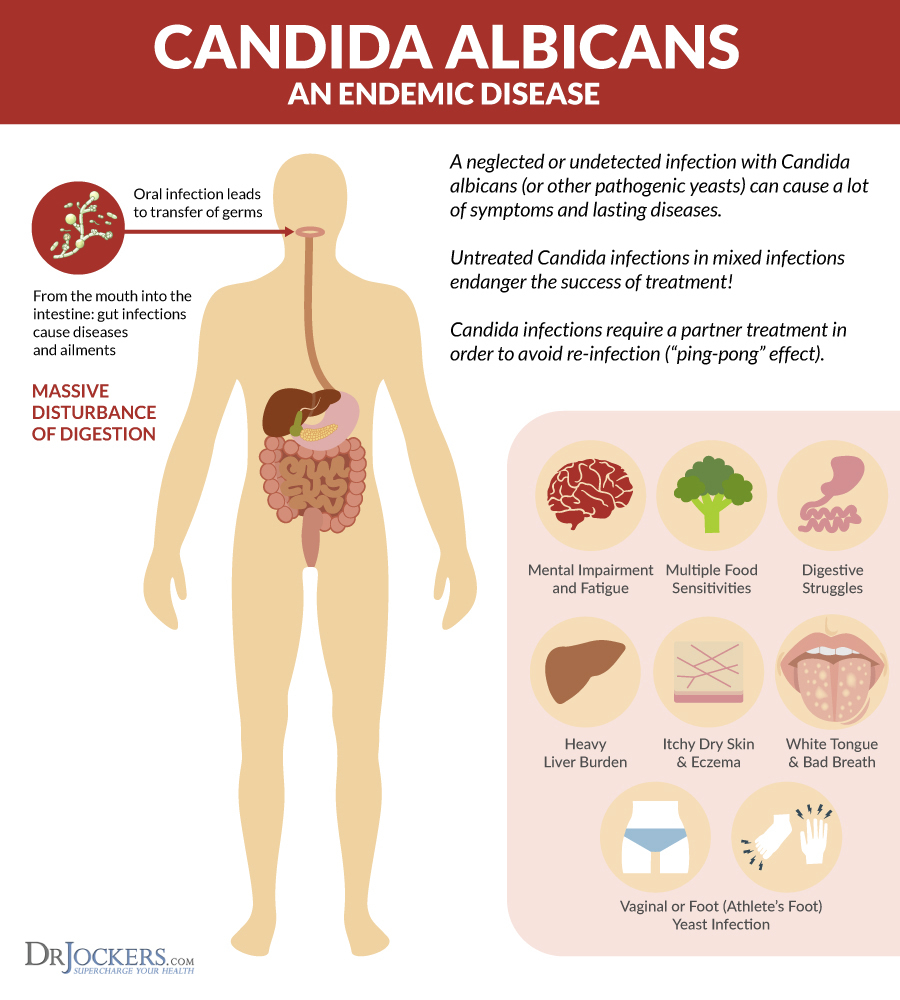
They usually perform a skin scraping, such as a skin lesion KOH exam. In the skin lesion KOH exam, skin scrapings are mixed with potassium hydrochloride (KOH) to determine if fungi are present.
How it’s treated
Ringworm of the scalp requires prescription oral medication, which may come in the form of a tablet, capsule, or liquid. Examples include:
- fluconazole (Diflucan)
- griseofulvin (Fulvicin, Gris-PEG), which is typically the drug of choice and is safe for children
- itraconazole (Sporanox)
- terbinafine
Everyone with ringworm of the scalp should use an antifungal shampoo. All members of their household should use it too. Examples include ketoconazole shampoo (Nizoral Anti-Dandruff Shampoo).
Jock itch (tinea cruris)
Jock itch happens in the area near your groin and thighs. It’s most common in men and adolescent boys.
The main symptom is an itchy, red, and sometimes painful rash that typically starts in the groin or around the upper inner thighs. The rash may worsen after exercise or other physical activity and can spread to the buttocks and abdomen.
The rash may worsen after exercise or other physical activity and can spread to the buttocks and abdomen.
The affected skin may also appear:
- scaly
- flaky
- cracked
- moist and possibly macerated, in the case of an open sore
The outer border of the rash can be slightly raised and darker.
How it’s diagnosed
A doctor can diagnose jock itch during a physical examination or after examining a sample under a microscope.
How it’s treated
Treatment often begins with OTC or prescription creams.
OTC creams, sprays, and powders include:
- butenafine (Lotrimin Ultra Jock Itch Cream)
- clotrimazole (Lotrimin AF Jock Itch Antifungal Cream)
- miconazole (CareALL Miconazole Cream, Lotrimin AF Jock Itch Antifungal Powder Spray)
- terbinafine (Lamisil AT Cream for Jock Itch, Silka Antifungal Cream, Silka Jock Itch Cream)
Prescription creams include:
- econazole
- ketoconazole (Ketozole)
- luliconazole (Luzu)
- oxiconazole (Oxistat)
- sulconazole (Exelderm)
Applying a cool compress can also help soothe the skin.
If topical treatments don’t work, a doctor may prescribe oral antifungals, such as:
- fluconazole (Diflucan)
- itraconazole (Sporanox)
- terbinafine
Oral medications are typically reserved for recurrent, treatment-resistant, or chronic infections.
Tinea versicolor (pityriasis versicolor)
In tinea versicolor, small oval discolored patches develop on the skin. It’s sometimes called pityriasis versicolor.
This infection is caused by an overgrowth of a fungus called Malassezia. Malassezia is naturally present on the skin of most adults.
The discolored skin patches mostly occur on the back, chest, and upper arms, but they can also affect the scalp. They may look lighter or darker than the rest of the skin and can be red, pink, tan, or brown. On people with darker skin, the patches may appear white. These patches can be itchy, flaky, or scaly.
Tinea versicolor is more likely to appear during the summer or in areas with a warm, wet climate. It’s also common in people who work out or sweat often. The condition can sometimes return following treatment.
It’s also common in people who work out or sweat often. The condition can sometimes return following treatment.
How it’s diagnosed
A doctor can diagnose tinea versicolor with a:
- physical examination
- Wood’s lamp examination, in which a healthcare professional uses a handheld blacklight to confirm the presence of fungi or bacteria
- skin lesion biopsy, which involves removing a small skin sample and having it tested in a laboratory
- skin lesion KOH exam
How it’s treated
The standard treatment for tinea versicolor is topical products such as soaps, creams, lotions, and shampoos. Ingredients to look for include:
- ketoconazole, found in products such as prescription-strength shampoo and Extina foam
- pyrithione zinc, found in products such as Vanicream Z-Bar Medicated Cleansing Bar, Vanicream Dandruff Shampoo, and Selsun blue Itchy Dry Scalp Antidandruff Shampoo
- selenium sulfide, found in products such as Selsun blue Moisturizing Antidandruff Shampoo and Selsun blue Medicated Antidandruff Shampoo
If tinea versicolor returns following treatment, a doctor may recommend you use a medicated cleanser once or twice a month.
Oral medication is rarely needed. A doctor may prescribe a short course of oral antifungals if tinea versicolor is recurrent, treatment-resistant, widespread, severe, or creates thick scales.
They include:
- fluconazole (Diflucan)
- itraconazole (Sporanox)
Athlete’s foot (tinea pedis)
Athlete’s foot affects the skin on your feet, often between your toes. It can also appear on the soles of your feet.
Typical symptoms of athlete’s foot include:
- itching or a burning, stinging sensation between your toes or on the soles
- skin that appears red, scaly, dry, or flaky
- peeling skin
- thickened soles
- cracked or blistered skin
- deep blisters on the soles, in rare cases
In some cases, the infection can also spread to other areas. Examples include the:
- nails, as in onychomycosis
- groin, as in jock itch (tinea cruris)
- hands, as in tinea manuum
How it’s diagnosed
A doctor can diagnose athlete’s foot by observing your symptoms or performing a skin test such as the skin lesion KOH exam.
How it’s treated
You can treat athlete’s foot with a variety of OTC topical products, such as:
- butenafine (Lotrimin Ultra Athlete’s Foot Cream)
- clotrimazole (CareALL Athlete’s Foot Cream, Lotrimin AF Cream for Athlete’s Foot)
- miconazole (Desenex Athlete’s Foot Shake Powder)
- terbinafine (Lamisil AT Cream, Lamisil AT Cream for Athlete’s Foot, Silka Antifungal Cream)
- tolnaftate (Dr. Scholl’s Odor-X Antifungal Spray Powder, Lotrimin AF Athlete’s Foot Daily Prevention Deodorant Powder Spray, Tinactin Athlete’s Foot Cream)
Terbinafine tends to be the fastest-acting of these medications.
If OTC products don’t help clear up athlete’s foot within 2 weeks or so, a doctor may prescribe:
- prescription-strength topical clotrimazole
- sulconazole (Exelderm)
Doctors usually prescribe oral antifungals when the infection is recurrent, causes blisters, or involves the tops of the feet, soles, or heels. They include:
They include:
- fluconazole (Diflucan)
- griseofulvin (Fulvicin, Gris-PEG), which is safe for children
- itraconazole (Sporanox)
- terbinafine
Did you know?
Athlete’s foot tends to recur, so it’s important to dry the toes and feet thoroughly after showering or bathing. Use a powder, especially in between the toes.
Onychomycosis
Onychomycosis is a fungal infection of the nails. It can affect the fingernails or the toenails, although infections of the toenails are 7 to 10 times more common.
Symptoms of onychomycosis include nails that:
- have flaky white patches and pits near the top
- are discolored (typically yellow, brown, black, purplish, green, or white)
- are brittle or break easily
- are thick
- are raised or crusty, in the case of toenails
How it’s diagnosed
A doctor will usually take a nail clipping and some subfungal debris and send them off for a periodic acid–Schiff (PAS) stain or culture.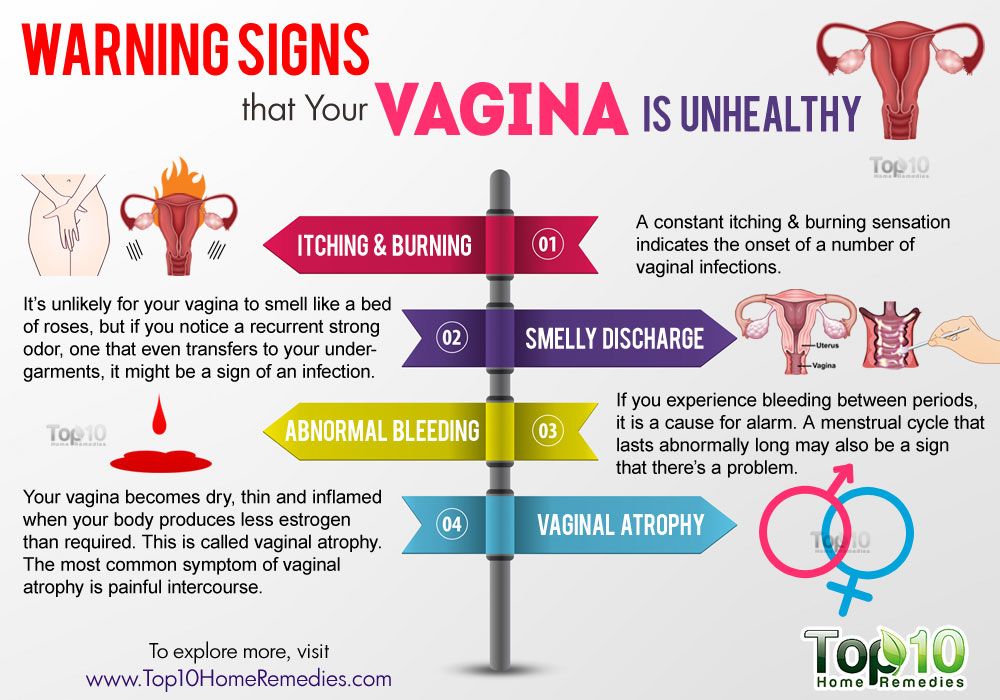
On some occasions, they may perform a skin lesion KOH exam. However, the PAS stains and cultures are more accurate.
How it’s treated
Prescription medications are often required to treat this type of infection. The standard treatment is oral terbinafine. It’s typically prescribed for 6 or 12 weeks, depending on whether you have a fingernail or toenail infection.
Treatment is notoriously tricky due to factors such as prolonged treatment time and the likelihood of recurrence.
Other oral antifungals that may be used include:
- fluconazole (Diflucan)
- griseofulvin (Fulvicin, Gris-PEG), which is safe for children
- itraconazole (Sporanox)
Doctors often prescribe topical antifungals as well. They include:
- ciclopirox (Ciclodan)
- efinaconazole (Jublia)
- tavaborole (Kerydin)
In severe cases, a doctor may remove some or all of an affected nail.
Emerging treatment options include lasers and light therapy.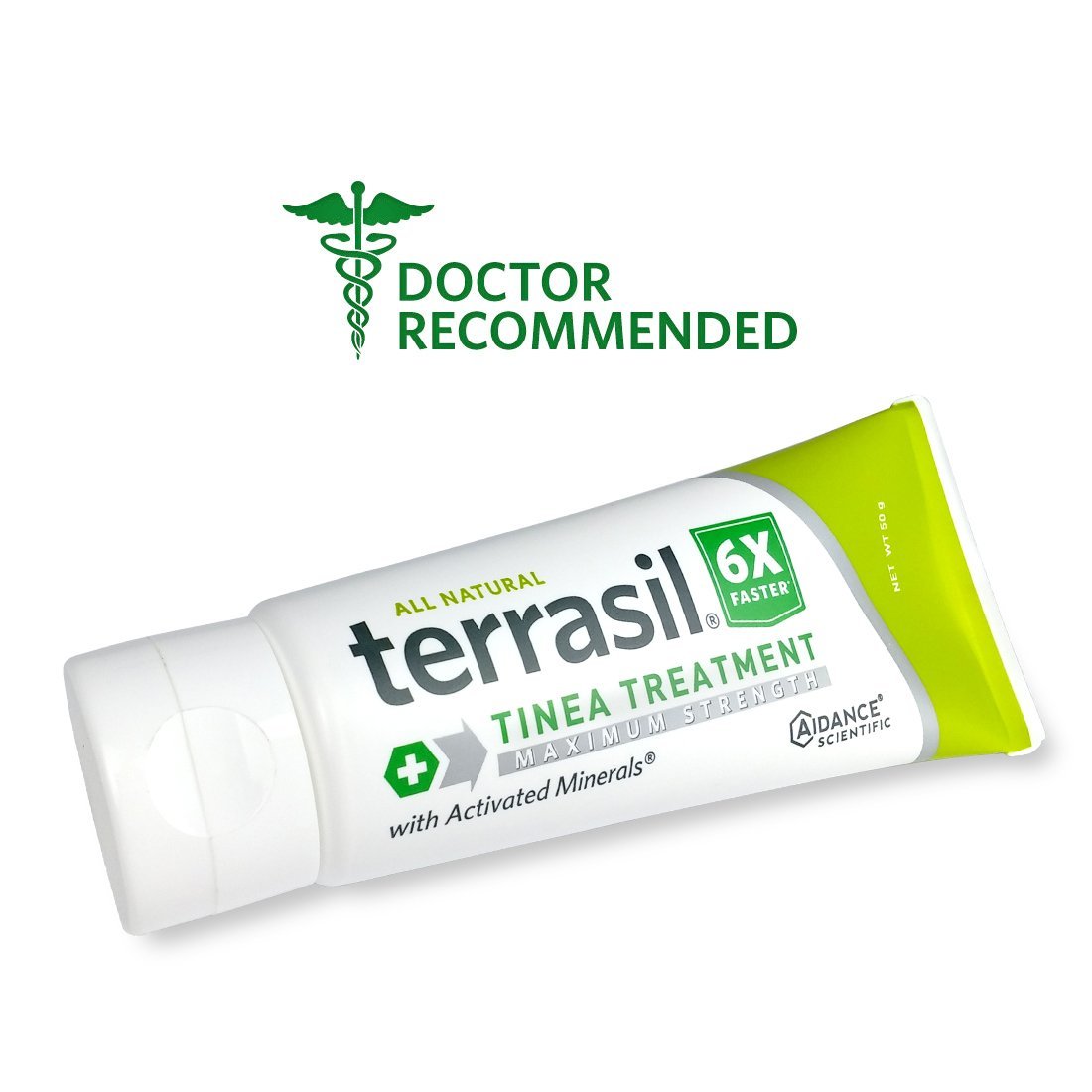 More data on their effectiveness is needed.
More data on their effectiveness is needed.
Because a rash is a common symptom of most fungal skin infections, they’re often referred to as fungal skin rashes or fungal rashes. Onychomycosis is one of the few fungal skin infections that doesn’t typically cause a rash.
Several factors can increase your risk of getting a fungal skin infection. They include:
- living in a warm or wet environment
- sweating heavily
- not keeping your skin clean and dry
- sharing items such as clothing, shoes, towels, or bedding
- wearing tight clothing or footwear that doesn’t breathe well
- taking part in activities that involve frequent skin-to-skin contact
- coming into contact with animals that may be infected
- having a weakened immune system due to immunosuppressant drugs, cancer treatment, or conditions such as HIV or AIDS
To help prevent a fungal skin infection from developing, try to keep the following tips in mind:
- Be sure to practice good hygiene.

- Do not share clothing, towels, or other personal items.
- Wear clean clothes every day, particularly socks and underwear.
- Choose clothing and shoes that breathe well. Avoid clothing or shoes that are too tight or have a restrictive fit.
- Make sure to dry off properly with a clean and dry towel after showering, bathing, or swimming.
- Wear sandals or flip-flops in locker rooms instead of walking with bare feet.
- Wipe down shared surfaces, such as gym equipment or mats.
- Stay away from animals that have signs of a fungal infection, such as missing fur or frequent scratching.
Fungal skin infections are common.
Although these infections aren’t usually serious, they can cause discomfort and irritation due to itchy or scaly red skin. If not treated, the rash may spread or become more irritated.
Many fungal skin infections eventually improve in response to OTC fungal treatments. However, call a doctor or other healthcare professional if you:
- have a fungal skin infection that does not improve, gets worse, or returns after OTC treatment
- notice patches of hair loss along with itchiness or scaly skin
- have a weakened immune system and suspect a fungal infection
- have diabetes and think you have athlete’s foot or onychomycosis
If you are immunocompromised or have diabetes, an untreated infection can lead to cellulitis or systemic infection.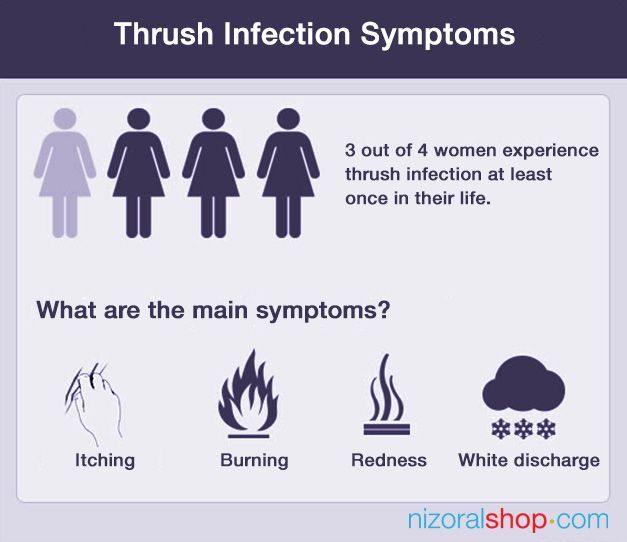
Also, call a doctor or other healthcare professional if you have an infection that does not improve with OTC medications. You may need a prescription for more effective treatment.
Tinea Cruris – StatPearls – NCBI Bookshelf
Continuing Education Activity
Tinea cruris, also known as jock itch, is an infection involving the genital, pubic, perineal, and perianal skin caused by pathogenic fungi known as dermatophytes. The evaluation and treatment of tinea cruris are discussed in the activity. This activity reviews the role of the healthcare team in improving care for patients with this condition. The activity will also highlight evidence-based therapeutics and lifestyle modifications to avoid common mistakes and mistreatments associated with the management of dermatophyte infections.
Objectives:
Identify the etiology of tinea cruris.
Outline the evaluation of tinea cruris.
Review the treatment options available for tinea cruris.

Describe interprofessional team strategies to improve the management of patients affected by tinea cruris.
Access free multiple choice questions on this topic.
Introduction
Tinea cruris, also known as jock itch, is an infection involving the genital, pubic, perineal, and perianal skin caused by pathogenic fungi known as dermatophytes.[1][2][3][4][5] These dermatophytes affect keratinized structures such as hair and the epidermis’ stratum corneum resulting in a characteristic rash. Intertriginous areas are hospitable environments for fungus, with sweating, maceration, and alkaline pH being responsible for the groin’s predilection for infection.[1][3][4][5]
While tinea infections are often classified by the location of the body affected, they are also organized according to the responsible organism’s primary source and mode of transmission.[3] Geophilic, zoophilic, and anthropophilic fungi are found in and transmitted by soil, animals, and humans, respectively. [1][3][6][7] Autoinfection of dermatophytes is also possible and especially crucial in tinea cruris as foot-to-groin spread can occur.[1]
[1][3][6][7] Autoinfection of dermatophytes is also possible and especially crucial in tinea cruris as foot-to-groin spread can occur.[1]
Etiology
Tinea cruris is caused by dermatophytes belonging to three genera, Trichophyton, Epidermophyton, and Microsporum.[5]
Trichophyton rubrum has been isolated most commonly and remains the most frequent cause of tinea cruris worldwide; however, most studies do recognize the increasing prevalence of Trichophyton mentagrophytes and other organisms in certain regions.[1][2][3][4][7] Several risk factors have been identified that predispose an individual to tinea cruris, including excessive perspiration, occlusive clothing, improper hygiene, diabetes mellitus, immunocompromise, and lower socioeconomic status.[1][2][3][6]
Athletes, especially those involved in contact sports, may be more likely to contract tinea infections.[1] Genetics can also make a patient more susceptible to dermatophytes.[3][6] Of all these factors, perspiration appears to be the most influential variable in the development of infection.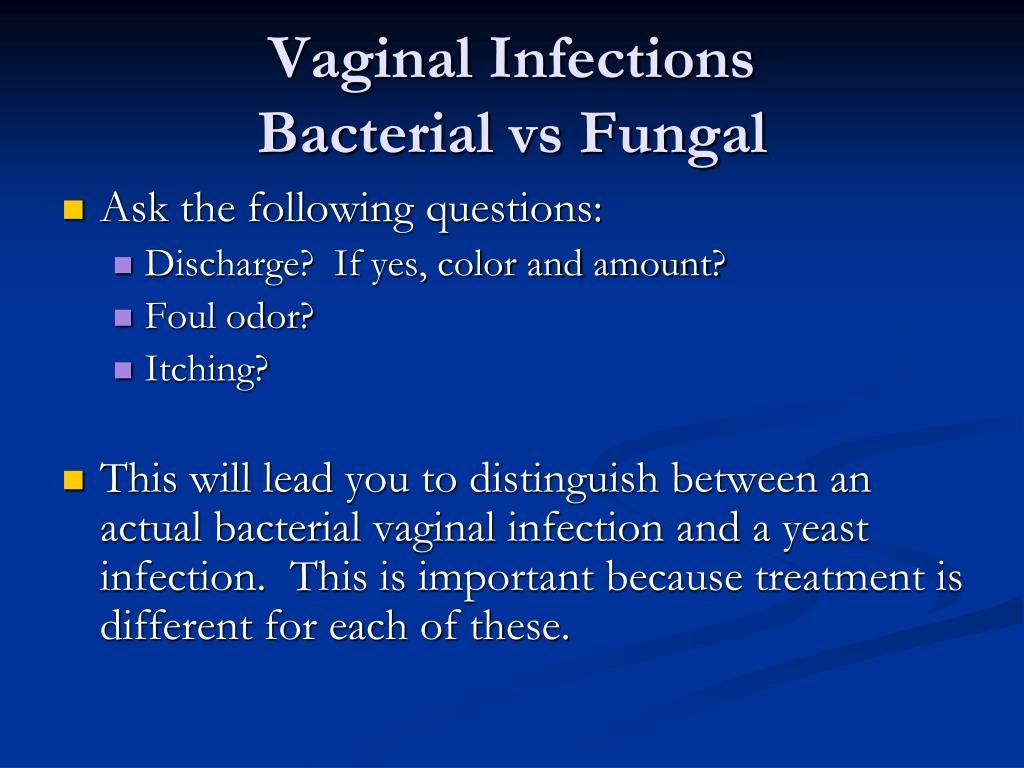 [1][8] In India, an area affected disproportionately often with dermatophytes, a study was conducted in response to the increasing frequency of and decreased treatment efficacy for local tinea infections.[9] Diabetes mellitus, family members with tinea, and personal history of cooking food were found to be positively associated with chronic and relapsing disease.[9]
[1][8] In India, an area affected disproportionately often with dermatophytes, a study was conducted in response to the increasing frequency of and decreased treatment efficacy for local tinea infections.[9] Diabetes mellitus, family members with tinea, and personal history of cooking food were found to be positively associated with chronic and relapsing disease.[9]
Epidemiology
Cutaneous mycoses, including tinea cruris, affect 20 to 25 percent of the world’s population.[3][10] Developing and tropical countries have an increased prevalence of dermatophyte infections secondary to high temperatures and increased humidity.[1][11] In the United States, there have been an estimated 29.4 million cases of superficial fungal infections and over 51 million reported physician visits.[6] Adolescent and adult males comprise the majority of patients seen for tinea cruris and are affected by the disorder with increased frequency.[1][2][11] Worldwide increases in the occurrence of dermatophytoses and the discovery of recalcitrant infections have caused global concern. [3][4][5][9]
[3][4][5][9]
Pathophysiology
A simplified explanation of the complex and not well-understood pathophysiology of dermatophytes includes the organism’s use of proteinases to digest keratin found in the skin’s stratum corneum.[6][12][7]
Histopathology
While not always necessary for diagnosis, a potassium hydroxide (KOH) preparation may reveal histology consistent with dermatophyte infections.[1][2][3] Characteristic findings include branching or non-branching septate hyphae and possible arthroconidiospores.[2][3]
History and Physical
Patients with tinea cruris present complaining of a pruritic rash involving the groin.[1][2] The area may be irritated and painful if maceration is present, and secondary infections may result in inflammation and discomfort.[2] Duration of symptoms, previous occurrences, similar rashes in other locations, and past treatments should be elucidated. Individuals should be questioned about any history of diabetes, immunocompromise, renal disease, or hepatic dysfunction. [13] Clinicians should inquire about excessive sweating, wardrobe changes, and personal hygiene habits. A review of the patient’s environmental and occupation exposures, including people, pets, animals, and contaminated soil, may be contributory.[13]
[13] Clinicians should inquire about excessive sweating, wardrobe changes, and personal hygiene habits. A review of the patient’s environmental and occupation exposures, including people, pets, animals, and contaminated soil, may be contributory.[13]
On physical examination, an erythematous, scaly, annular plaque with a raised leading edge and central clearing can be visualized, extending anywhere from the groin, upper thigh, and perineum to the perianal region.[1][2]
Evaluation
In most cases, tinea cruris can be diagnosed clinically; however, several tests exist to investigate a rash of the groin with unknown etiology.[1][2][3] Potassium hydroxide (KOH) preparations, skin biopsy with periodic acid-Schiff (PAS) stain, and fungal cultures on Sabouraud’s agar media can be utilized when the diagnosis is in question or the case of recurrent or recalcitrant episodes.[1][2][3]
In general, the sample should be obtained from the leading edge of the lesion to ensure an adequate collection of infected scales. [1] Potassium hydroxide (KOH) mounts are generally procured with a scalpel scraping technique; however, new studies have indicated that utilizing a cellophane adhesive tape method may simplify the collection process, facilitate transportation, provide a higher quality sample, and improve slide preservation time.[14]
[1] Potassium hydroxide (KOH) mounts are generally procured with a scalpel scraping technique; however, new studies have indicated that utilizing a cellophane adhesive tape method may simplify the collection process, facilitate transportation, provide a higher quality sample, and improve slide preservation time.[14]
Treatment / Management
Antifungals utilized in treating dermatophytoses, including tinea cruris, target the synthesis of ergosterol, a vital component of fungal plasma membranes.[4] Management strategies are similar worldwide; however, some countries have specific guidelines based on their region’s fungal profile.[6] Topical therapies are effective and usually preferred.[2][4][6] Allylamines (terbinafine, butenafine, naftifine) and azoles (clotrimazole, miconazole, sulconazole, oxiconazole, econazole, ketoconazole) are the mainstays of topical treatment regimens. They are generally prescribed once or twice daily for two to four weeks.[1][3][6]
Deciding which agent to use should be based on patient compliance, cost, and medication accessibility, as there is insufficient data to directly compare the effectiveness of individual drugs and classes.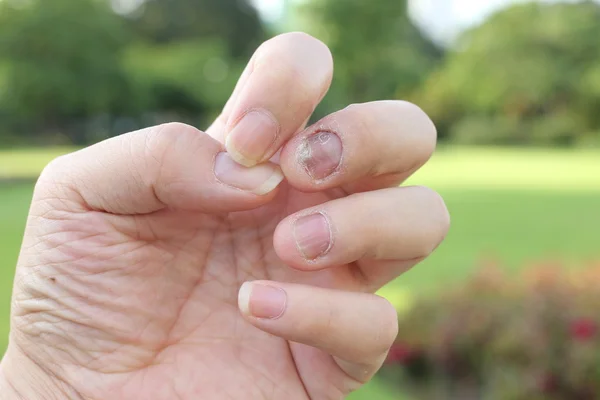 [8][15][16][13] Allylamines have a potentially shorter treatment timeline, have demonstrated lower relapse rates, and their metabolism is independent of the cytochrome p450 system.[8][13] Azoles are not as costly as allylamines but often require a longer treatment duration.[8] One newer topical azole, luliconazole, requires only once daily application for one week and may improve patient compliance through a more convenient dosing schedule.[6] Ciclopirox olamine is an older topical preparation with a unique mechanism of action compared to the commonly used allylamines and azoles.[17] Recent studies have demonstrated a number of benefits to ciclopirox therapy; however, it remains an underutilized antifungal medication.[17]
[8][15][16][13] Allylamines have a potentially shorter treatment timeline, have demonstrated lower relapse rates, and their metabolism is independent of the cytochrome p450 system.[8][13] Azoles are not as costly as allylamines but often require a longer treatment duration.[8] One newer topical azole, luliconazole, requires only once daily application for one week and may improve patient compliance through a more convenient dosing schedule.[6] Ciclopirox olamine is an older topical preparation with a unique mechanism of action compared to the commonly used allylamines and azoles.[17] Recent studies have demonstrated a number of benefits to ciclopirox therapy; however, it remains an underutilized antifungal medication.[17]
Oral preparations exist to manage tinea cruris and are indicated for chronic, recurrent, and recalcitrant disease.[1][2][4][6] Extensive or diffuse rashes and patients with immunocompromise may also require systemic treatments.[4] Stratum corneum penetration and concentration maintenance, keratin adherence, patient tolerance, and a minimal drug interaction profile are hallmarks of the ideal systemic medication for dermatophytoses. [4] Oral terbinafine and itraconazole have favorable characteristics for dermatophyte management and are the most often prescribed.[4][15][16][13] Fluconazole has demonstrated efficacy in treating tinea cruris; however, it is not preferred due to its poor keratin adherence and prolonged treatment duration.[4] Griseofulvin has similar pharmacokinetic limitations as fluconazole, and it is more appropriately utilized in the management of tinea capitis than tinea cruris.[1][4][6] Due to its potential for hepatotoxicity, oral ketoconazole is no longer recommended for dermatophytoses.[1][2][4][15][16] Topical antifungal therapies may be used as an adjunct in patients requiring systemic treatment. Topical and oral antibiotics can be administered when a secondary bacterial infection is present.[3][13]
[4] Oral terbinafine and itraconazole have favorable characteristics for dermatophyte management and are the most often prescribed.[4][15][16][13] Fluconazole has demonstrated efficacy in treating tinea cruris; however, it is not preferred due to its poor keratin adherence and prolonged treatment duration.[4] Griseofulvin has similar pharmacokinetic limitations as fluconazole, and it is more appropriately utilized in the management of tinea capitis than tinea cruris.[1][4][6] Due to its potential for hepatotoxicity, oral ketoconazole is no longer recommended for dermatophytoses.[1][2][4][15][16] Topical antifungal therapies may be used as an adjunct in patients requiring systemic treatment. Topical and oral antibiotics can be administered when a secondary bacterial infection is present.[3][13]
A commonly used alternative treatment known as Whitfield’s ointment has insufficient evidence of benefit.[18] Nystatin, a frequently utilized treatment for cutaneous candida infections, is ineffective for managing dermatophytoses such as tinea cruris. [2] Combined topical corticosteroid and antifungal therapy remain controversial. Some studies have demonstrated improved cure rates with concomitant steroid and antifungal topical applications; however, these results were based on low-quality evidence.[18] While steroids may improve acute inflammation and itching, they may also fortify dermatophyte’s plasma membranes rendering antifungal medications less effective.[4] Steroids also activate fungal metabolism and can potentially facilitate the worsening of the primary infection.[4] Tinea incognito is another possible complication of steroid administration where the typical presentation of tinea is masked, and diagnosis is delayed.[1] Currently, topical steroids are not recommended as part of an evidence-based tinea cruris treatment regimen.[2][3][2][18][13]
[2] Combined topical corticosteroid and antifungal therapy remain controversial. Some studies have demonstrated improved cure rates with concomitant steroid and antifungal topical applications; however, these results were based on low-quality evidence.[18] While steroids may improve acute inflammation and itching, they may also fortify dermatophyte’s plasma membranes rendering antifungal medications less effective.[4] Steroids also activate fungal metabolism and can potentially facilitate the worsening of the primary infection.[4] Tinea incognito is another possible complication of steroid administration where the typical presentation of tinea is masked, and diagnosis is delayed.[1] Currently, topical steroids are not recommended as part of an evidence-based tinea cruris treatment regimen.[2][3][2][18][13]
Differential Diagnosis
The differential diagnosis for tinea cruris includes several other dermatologic conditions affecting the groin with similar presentations. Candidiasis, erythrasma, psoriasis, and seborrheic dermatitis exhibit comparable signs and symptoms and are most commonly confused with the fungal groin infection. Unlike tinea cruris, candidal intertrigo frequently affects women, and the rash may involve the scrotum and penis in males.[1][2] Satellite lesions and erythema without central clearing are indicative of candida as opposed to tinea. The rash of erythrasma lacks an active border and demonstrates coral-red fluorescence on Wood lamp examination. Psoriasis will likely manifest in other areas in addition to the crural region. Seborrheic dermatitis presents with greasy scales on an erythematous base.[2]
Unlike tinea cruris, candidal intertrigo frequently affects women, and the rash may involve the scrotum and penis in males.[1][2] Satellite lesions and erythema without central clearing are indicative of candida as opposed to tinea. The rash of erythrasma lacks an active border and demonstrates coral-red fluorescence on Wood lamp examination. Psoriasis will likely manifest in other areas in addition to the crural region. Seborrheic dermatitis presents with greasy scales on an erythematous base.[2]
Prognosis
Patients with tinea cruris who undergo an appropriate treatment course experience cure rates ranging from 80 to 90 percent.[19]
Complications
Failure of therapy and recurrence are the most likely complications of tinea cruris. They have been attributed to reinfection from close contacts, autoinfection from separate body locations, infection by uncommon species such as zoonoses, misdiagnosis, drug resistance, and non-adherence to the management plan.[3] Steroid use may suppress the physical signs of tinea cruris, making the diagnosis more difficult. Also, chronic application can result in skin atrophy and telangiectasias.[4] Secondary bacterial infection is another potential complication of tinea cruris.[3] Majocchi’s granuloma is an uncommon complication of cutaneous fungal infections in which dermatophytes disseminate into the subcutaneous tissue secondary to skin breakdown, immunosuppression, or topical steroid use resulting in a deep, inflammatory disease.[3][20] A dermatophytid reaction may result in an allergic response at a separate location from the original tinea site.[21]
Also, chronic application can result in skin atrophy and telangiectasias.[4] Secondary bacterial infection is another potential complication of tinea cruris.[3] Majocchi’s granuloma is an uncommon complication of cutaneous fungal infections in which dermatophytes disseminate into the subcutaneous tissue secondary to skin breakdown, immunosuppression, or topical steroid use resulting in a deep, inflammatory disease.[3][20] A dermatophytid reaction may result in an allergic response at a separate location from the original tinea site.[21]
Consultations
Consultation with dermatology or infectious disease may be warranted in recurrent or recalcitrant cases.[3]
Deterrence and Patient Education
Patient education should focus on non-pharmacologic measures to treat and prevent recurrences of tinea cruris. Loose-fitting, non-restrictive garments should be encouraged, and clothing should not be donned until the underlying skin is completely dried.[3] Because autoinfection originating from tinea pedis may occur, patients should avoid walking barefoot, and protective footwear should be used in public facilities.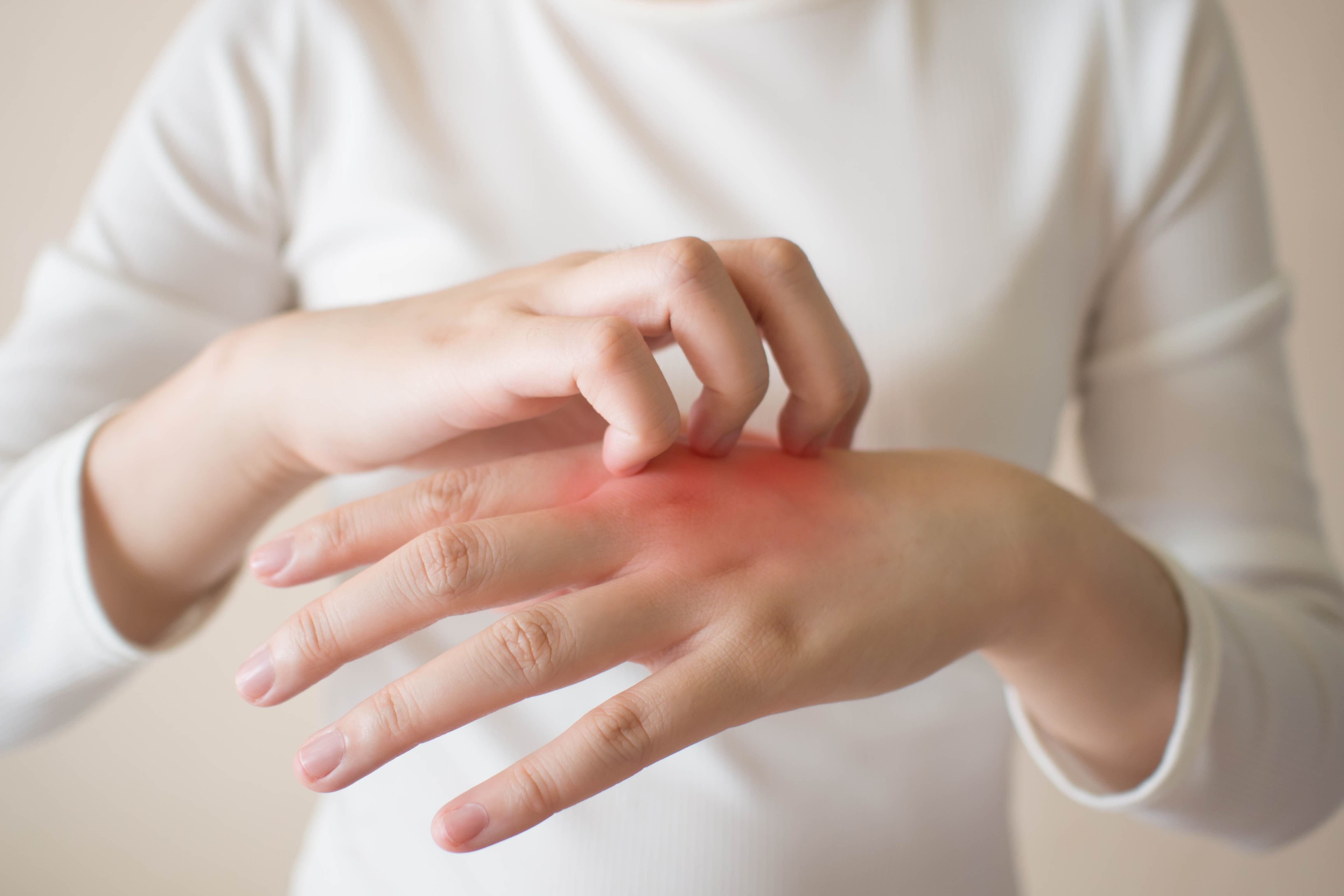 [3][13] Identification and treatment of potentially infected contacts, whether human or animal, should be undertaken.[13] Self-treatment with over-the-counter antifungals and steroids should be discouraged as this may result in resistant or chronic infections and can hinder a clinician’s ability to make an accurate and timely diagnosis.[4]
[3][13] Identification and treatment of potentially infected contacts, whether human or animal, should be undertaken.[13] Self-treatment with over-the-counter antifungals and steroids should be discouraged as this may result in resistant or chronic infections and can hinder a clinician’s ability to make an accurate and timely diagnosis.[4]
Enhancing Healthcare Team Outcomes
Tinea cruris is a prevalent pathology with a worldwide distribution and an extensive history of affecting human populations. Despite our familiarity with the condition, there has been limited research specific to this subset of dermatophyte infections. Renewed interest has emerged with the development of recalcitrant infections and concern over fungal resistance. Self-treatment with easy-to-access over-the-counter topical antifungal and steroid preparations have been implicated as a probable cause of the observed decrease in treatment efficacy. In the context of fungal resistance, newly developed formulations such as luliconazole and underutilized, older agents like ciclopirox may be beneficial.
With regard to corticosteroids, there is conflicting data on the appropriateness of their use for tinea cruris. Current management principles and guidelines label them as mistreatment; however, continued investigations of their utility are underway. If a practitioner believes topical steroids may benefit a patient, close supervision should be maintained throughout the treatment course with continued consideration of known adverse event potential for the individual and public health outcomes.
With an understanding of the changing landscape of this common condition, and by implementing an interprofessional healthcare team approach including primary care clinicians (including PAs and NPs), dermatologists, infectious disease specialists, pharmacists, and nursing, patient care and public health may be improved through targeted, conscientious mycological treatment, patient education, and antifungal stewardship. [Level 2] This interprofessional paradigm should lead to the best outcomes with minimal to no adverse events. [Level 5]
[Level 5]
Review Questions
Access free multiple choice questions on this topic.
Comment on this article.
Figure
Tinea Cruris. Contributed by DermNetNZ
References
- 1.
Gupta AK, Chaudhry M, Elewski B. Tinea corporis, tinea cruris, tinea nigra, and piedra. Dermatol Clin. 2003 Jul;21(3):395-400, v. [PubMed: 12956194]
- 2.
Ely JW, Rosenfeld S, Seabury Stone M. Diagnosis and management of tinea infections. Am Fam Physician. 2014 Nov 15;90(10):702-10. [PubMed: 25403034]
- 3.
Sahoo AK, Mahajan R. Management of tinea corporis, tinea cruris, and tinea pedis: A comprehensive review. Indian Dermatol Online J. 2016 Mar-Apr;7(2):77-86. [PMC free article: PMC4804599] [PubMed: 27057486]
- 4.
Khurana A, Sardana K, Chowdhary A. Antifungal resistance in dermatophytes: Recent trends and therapeutic implications. Fungal Genet Biol. 2019 Nov;132:103255. [PubMed: 31330295]
- 5.

Sardana K, Kaur R, Arora P, Goyal R, Ghunawat S. Is Antifungal Resistance a Cause for Treatment Failure in Dermatophytosis: A Study Focused on Tinea Corporis and Cruris from a Tertiary Centre? Indian Dermatol Online J. 2018 Mar-Apr;9(2):90-95. [PMC free article: PMC5885633] [PubMed: 29644192]
- 6.
Gupta AK, Foley KA, Versteeg SG. New Antifungal Agents and New Formulations Against Dermatophytes. Mycopathologia. 2017 Feb;182(1-2):127-141. [PubMed: 27502503]
- 7.
Odom R. Pathophysiology of dermatophyte infections. J Am Acad Dermatol. 1993 May;28(5 Pt 1):S2-S7. [PubMed: 8496407]
- 8.
Nadalo D, Montoya C, Hunter-Smith D. What is the best way to treat tinea cruris? J Fam Pract. 2006 Mar;55(3):256-8. [PubMed: 16510062]
- 9.
Singh S, Verma P, Chandra U, Tiwary NK. Risk factors for chronic and chronic-relapsing tinea corporis, tinea cruris and tinea faciei: Results of a case-control study. Indian J Dermatol Venereol Leprol.
 2019 Mar-Apr;85(2):197-200. [PubMed: 30719987]
2019 Mar-Apr;85(2):197-200. [PubMed: 30719987]- 10.
Ameen M. Epidemiology of superficial fungal infections. Clin Dermatol. 2010 Mar 04;28(2):197-201. [PubMed: 20347663]
- 11.
Vena GA, Chieco P, Posa F, Garofalo A, Bosco A, Cassano N. Epidemiology of dermatophytoses: retrospective analysis from 2005 to 2010 and comparison with previous data from 1975. New Microbiol. 2012 Apr;35(2):207-13. [PubMed: 22707134]
- 12.
Samdani AJ. Dermatophyte growth and degradation of human stratum corneum in vitro (pathogenesis of dermatophytosis). J Ayub Med Coll Abbottabad. 2005 Oct-Dec;17(4):19-21. [PubMed: 16599028]
- 13.
Drake LA, Dinehart SM, Farmer ER, Goltz RW, Graham GF, Hardinsky MK, Lewis CW, Pariser DM, Skouge JW, Webster SB, Whitaker DC, Butler B, Lowery BJ, Elewski BE, Elgart ML, Jacobs PH, Lesher JL, Scher RK. Guidelines of care for superficial mycotic infections of the skin: tinea corporis, tinea cruris, tinea faciei, tinea manuum, and tinea pedis.
 Guidelines/Outcomes Committee. American Academy of Dermatology. J Am Acad Dermatol. 1996 Feb;34(2 Pt 1):282-6. [PubMed: 8642094]
Guidelines/Outcomes Committee. American Academy of Dermatology. J Am Acad Dermatol. 1996 Feb;34(2 Pt 1):282-6. [PubMed: 8642094]- 14.
Raghukumar S, Ravikumar BC. Potassium hydroxide mount with cellophane adhesive tape: a method for direct diagnosis of dermatophyte skin infections. Clin Exp Dermatol. 2018 Dec;43(8):895-898. [PubMed: 29845649]
- 15.
Gupta AK, Cooper EA. Update in antifungal therapy of dermatophytosis. Mycopathologia. 2008 Nov-Dec;166(5-6):353-67. [PubMed: 18478357]
- 16.
van Zuuren EJ, Fedorowicz Z, El-Gohary M. Evidence-based topical treatments for tinea cruris and tinea corporis: a summary of a Cochrane systematic review. Br J Dermatol. 2015 Mar;172(3):616-41. [PubMed: 25294700]
- 17.
Sonthalia S, Agrawal M, Sehgal VN. Topical Ciclopirox Olamine 1%: Revisiting a Unique Antifungal. Indian Dermatol Online J. 2019 Jul-Aug;10(4):481-485. [PMC free article: PMC6615394] [PubMed: 31334080]
- 18.

El-Gohary M, van Zuuren EJ, Fedorowicz Z, Burgess H, Doney L, Stuart B, Moore M, Little P. Topical antifungal treatments for tinea cruris and tinea corporis. Cochrane Database Syst Rev. 2014 Aug 04;(8):CD009992. [PubMed: 25090020]
- 19.
Hay R. Therapy of Skin, Hair and Nail Fungal Infections. J Fungi (Basel). 2018 Aug 20;4(3) [PMC free article: PMC6162762] [PubMed: 30127244]
- 20.
Trocoli Drakensjö I, Vassilaki I, Bradley M. Majocchis Granuloma Caused by Trichophyton mentagrophytes in 2 Immunocompetent Patients. Actas Dermosifiliogr. 2017 Jan-Feb;108(1):e6-e8. [PubMed: 26952202]
- 21.
Mayser P. [Dermatophyte : Current situation]. Hautarzt. 2017 Apr;68(4):316-323. [PubMed: 28116455]
Disclosure: Micah Pippin declares no relevant financial relationships with ineligible companies.
Disclosure: Michael Madden declares no relevant financial relationships with ineligible companies.

Disclosure: Moushumi Das declares no relevant financial relationships with ineligible companies.
How to treat skin and nail fungus: effective remedies and methods
Contents
- 1 Top 10 effective remedies for skin and nail fungus: proven recipes
- 1.1 Preface
- 1.1.1 Looking for an effective remedy for skin and nail fungus?
- 1.2 Causes of skin and nail fungus
- 1.3 Recognizing the symptoms of skin and nail fungus
- 1.4 Getting rid of skin and nail fungus: basic treatments
- 1.5 How to get rid of skin and nail fungus with folk remedies
- 1.6 Get rid of skin and nail fungus with quality products
- 1.6.1 Pharmaceutical remedies for skin and nail fungus are the best solution nails
- 1.8 Treatment of skin and nail fungus in children
- 1.8.1 Why pay attention to the treatment of fungus in a child?
- 1.8.2 What is important to know when treating a fungal infection in a child?
- 1.
 8.3 Benefits of using our products in the treatment of fungus in children
8.3 Benefits of using our products in the treatment of fungus in children
- 1.9 Treatment of skin and nail fungus in pregnant and lactating women
- 1.10 When to see a doctor
- 1.11 Related videos:
- 1.12.0.1 What is skin and nail fungus?
- 1.12.0.2 How can you protect yourself from fungus?
- 1.12.0.3 What are effective treatments for skin and nail fungus?
- 1.12.0.4 Are there any restrictions in the treatment of skin and nail fungus?
- 1.12.0.5 Which group of antimycotic drugs is best used in the treatment of skin and nail fungus?
- 1.12.0.6 Is it possible to completely cure skin and nail fungus?
9000 5 1.12 Q&A :
- 1.1 Preface
Get rid of skin and nail fungus with effective remedies. Find out which drugs will help you quickly and safely cure the disease and restore healthy skin and nails.
If you have problems with skin and nail fungus, then you know how unpleasant and even painful it is. However, you do not have to suffer and suffer endlessly. There are many drugs and methods that will help you get rid of the fungus safely and effectively.
However, you do not have to suffer and suffer endlessly. There are many drugs and methods that will help you get rid of the fungus safely and effectively.
One of the best ways to treat fungus is to use specialized products such as creams, gels and sprays. They may contain antimicrobial components that contribute to the destruction of fungal cells and prevent their further development.
In addition, there are many folk methods that can help you fight the fungus. For example, tea tree, garlic, or apple cider vinegar can be used to kill fungal cells and prevent future growth.
Do not be afraid to seek help from specialists – dermatologists and mycologists. They will help you choose the most effective treatment and suggest ways to prevent reinfection.
Regardless of which method you choose, remember that it is important to be patient and follow the instructions for use of the drugs or methods. And if you act on the advice of your doctor, you will soon be able to get rid of skin and nail fungus forever!
Foreword
Looking for an effective remedy for skin and nail fungus?
Fungal skin and nail infections are common and can lead to serious health problems.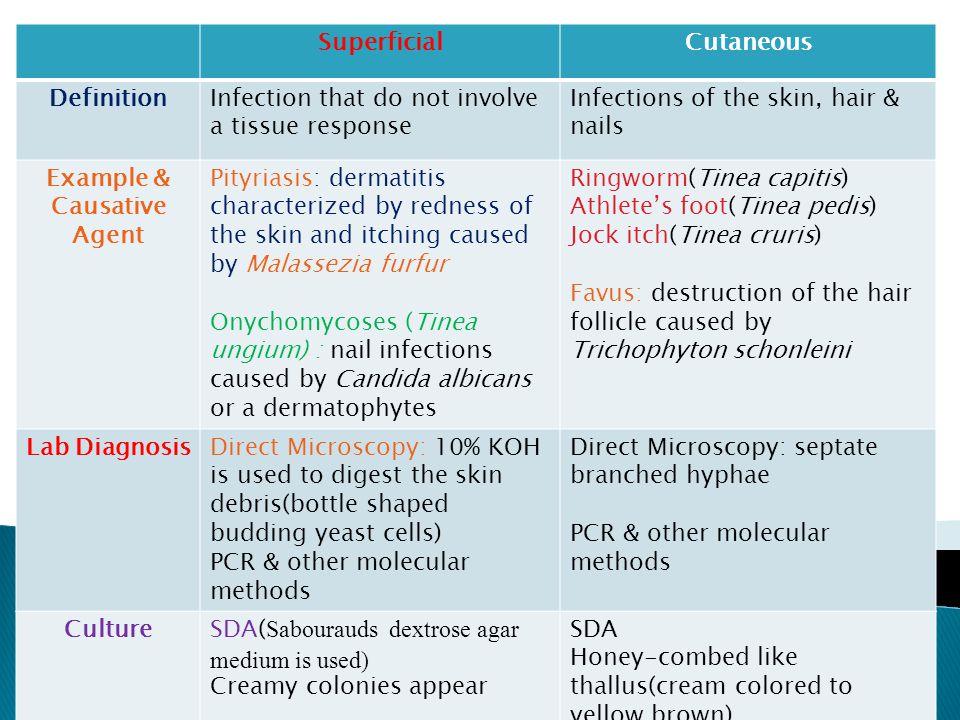 If you have experienced this problem, you probably know how difficult it is to get rid of fungi on the skin and nails.
If you have experienced this problem, you probably know how difficult it is to get rid of fungi on the skin and nails.
These products include creams, sprays, gels and other preparations that contain antifungal components and help to destroy the fungus at the root. Some of these remedies can be used to both treat and prevent fungal infections.
You can choose a suitable product for the treatment of skin and nail fungus on our website. We have a wide range of anti-fungal products from different manufacturers that have been medically tested and proven to be effective in the fight against skin and nail fungus.
- Here you will find only high-quality and proven products for skin and nail fungus.
- We have qualified specialists who will help you choose the most suitable product for your case.
- We guarantee the quality of all our products.
Do not torture yourself with long treatment of skin and nail fungus. Try our effective fungus remedies and get fast and reliable results!
Causes of skin and nail fungus
Skin and nail fungus is an infectious disease that can affect anyone. It is caused by various types of fungi that can enter the body through microcracks, wounds and other skin lesions.
It is caused by various types of fungi that can enter the body through microcracks, wounds and other skin lesions.
The main causes that contribute to the occurrence of the fungus are:
- Weak immunity. If the body cannot fight bacteria and infections, then the fungus can appear on the skin or nails;
- Some environmental factors, such as cold and humid climate, high humidity in the room, wearing tight and uncomfortable shoes;
- Frequent visits to public places where there are conditions for the development of the fungus, such as swimming pools, saunas, changing rooms;
- Violation of hygiene rules. Washing your feet improperly and not showering after a workout at the gym can all contribute to the development of fungal infections.
To avoid the occurrence of skin and nail fungus, it is necessary to significantly improve hygiene, monitor the selection of quality shoes and wear them in the right size.
Look for symptoms of skin and nail fungus
A fungal skin and nail infection can cause significant discomfort and serious consequences if symptoms are not detected and treated promptly.
Symptoms of skin and nail fungus include:
- Skin itching and redness;
- Eruptions and peeling;
- Formation of cracks and crusts on the skin;
- Thickening and/or darkening of the nail plate;
- Peeling and reshaping of the nail.
If you notice at least one of these signs, you should immediately contact a dermatologist for diagnosis and complex treatment.
| Itching and redness of the skin is one of the main symptoms of a fungal infection. |
Do not put off seeing a doctor and do not try to treat the fungus yourself, as this can lead to complications and aggravate the problem.
How to get rid of skin and nail fungus: basic treatments
Skin and nail fungus is a common problem faced by many people. In the event of its occurrence, it is important to start treatment as soon as possible in order to avoid further diseases and complications.
The main treatments for fungus are:
- Drug treatment – includes the use of antimycotic creams, ointments, lotions, tablets and capsules. These drugs act directly on the fungus and contribute to its destruction.
- Physiotherapeutic methods – can help in the treatment of fungus and have a general strengthening effect on the body. These include ultraviolet irradiation, laser therapy, electrophoresis and other methods.
- Folk remedies – no less effective in the fight against fungus. This may be the use of garlic, iodine, soda, vegetable oils and other natural ingredients.
It is strongly not recommended to choose the methods of treating the fungus on your own, as this can lead to complications and worsening of the condition. Be sure to contact a qualified medical professional who will help determine the type of fungus and choose the most effective treatment.
Drug Action Form of release
| Clotrimazole | Destroys fungal cells, preventing their growth and reproduction. | Cream, ointment, topical solution |
| Fluconazole | Kills fungi, including those that have become resistant to other drugs. | Tablets, injection |
| Lamisil | Kills most types of fungi, turning them into an inactive form. | Cream, ointment, solution for external use |
Regardless of the treatment method chosen, good hygiene and preventive measures must be observed to avoid re-infection with the fungus. This includes washing your skin and nails regularly, using only your personal hygiene items, cleaning your shoes, and other measures.
How to get rid of skin and nail fungus with folk remedies
Skin and nail fungus is a fairly common disease that causes not only physical discomfort, but also negatively affects the emotional state of a person. It is necessary to identify the causes of the disease and choose the appropriate method of treatment. One option is to use folk remedies.
One option is to use folk remedies.
Garlic is a natural antifungal agent that can kill skin and nail fungus. It is used both internally and externally. It is recommended to use it in the form of an ointment, mixed with oil and products that have antimycotic properties.
Chamomile is another effective remedy against fungus. Chamomile jam helps relieve itching and also has anti-inflammatory properties.
Vegetable oils , such as coconut, olive or pink, will also help fight skin and nail fungus. They heal damaged areas of the skin and prevent the development of fungus.
- Folk remedies do not bring quick results, but they do less harm to health.
- It is important to know that self-medication can lead to an exacerbation of the disease.
- If the first signs of skin and nail fungus appear, you should consult a doctor who will choose the best course of treatment.
Get rid of skin and nail fungus with quality products
Pharmaceutical remedies for skin and nail fungus are the best solution to the problem
Skin and nail fungus is a fairly common problem that causes a lot of inconvenience and pain. However, with the help of quality pharmaceuticals, you can effectively get rid of this problem and restore healthy nails and skin.
However, with the help of quality pharmaceuticals, you can effectively get rid of this problem and restore healthy nails and skin.
Skin and nail fungus products are capable of:
- Kill the fungus and prevent its re-development;
- Reduce itching, flaking and other symptoms of fungus;
- Restore the aesthetic appearance of nails and skin;
- Prevent spread of fungus to other areas of skin and nails.
| It is important to remember that the improvement of the skin and nails will take some time and requires a complex effect. Therefore, do not delay treatment and choose only high-quality preparations for skin and nail fungus that effectively cope with the task! |
Skin and nail fungus prevention
Skin and nail fungus is a common problem that can be prevented. One of the ways to protect against fungus is the use of prophylactic agents. Which of them are the most effective?
- Antiseptics.
 The use of such products helps to prevent the development of fungus on the skin and nails.
The use of such products helps to prevent the development of fungus on the skin and nails. - Tool processing. Regular treatment of manicure and pedicure tools with antiseptics helps to avoid fungal infection.
- Wearing shoes made from natural materials. Synthetic materials can create a favorable environment for the development of fungus.
Choose the preventive products and methods that are right for you and help you easily avoid skin and nail fungus!
Treatment of skin and nail fungus in children
Why pay attention to the treatment of fungus in a child?
Fungal infection of the skin and nails in children is a common dermatological defect, sometimes causing a lot of discomfort: itching, redness and hypersensitivity of the skin, exfoliation and exfoliation of nails. If such signs were found in your child, pay attention to the restoration of the condition of the epidermis and nails. Our effective means and methods will make it possible to restore a healthy look to the skin and nails of a child.
Our effective means and methods will make it possible to restore a healthy look to the skin and nails of a child.
What is important to know when treating a fungal infection in a child?
Before starting any medication, you should seek the advice of a qualified doctor who will determine the cause of the infection and prescribe the appropriate treatment. Our company offers effective products for the treatment of fungus in children in accordance with the recommendations of leading experts in the field of dermatology. Choose reliable treatment for your child.
Benefits of using our products in the treatment of fungus in children
- High efficiency: our products are aimed at eliminating the cause of the disease, this guarantees a complete cure.
- Safety: we use only natural ingredients and no antibiotics or hormones.
- Easy to use: many of our products can be used at home without professional help.

- Availability: we offer effective products at an affordable price.
Take our advice and eliminate your child’s fungus with our effective remedies and methods.
Treatment of skin and nail fungus in pregnant and lactating women
Pregnancy and breastfeeding are special periods in a woman’s life, when it is especially important to take care of your health and the health of your child. Treatment of skin and nail fungus during this period requires a special approach in order to choose effective and harmless remedies.
Unfortunately, many antimycotic drugs are prohibited in pregnant and lactating women. However, there are a number of safe and effective treatments for skin and nail fungus that will not harm the health of the mother and baby.
- Skin and nail hygiene is important to prevent fungal infections.
- Wipe affected areas several times a day with antiseptic solutions based on natural ingredients such as tea tree or lavender.

- Use a herbal oil treatment that nourishes and moisturizes the skin and nails, such as tea tree oil and eucalyptus oil.
When choosing products for the treatment of skin and nail fungus during pregnancy and lactation, always consult your doctor or pharmacist to select the safest and most effective remedy.
When to See a Doctor
Fungal infections of the skin and nails can be serious and should be treated early. However, it is not recommended to choose the means and carry out treatment on your own. Due to the specificity of a fungal infection, improper treatment can only aggravate the situation.
It is important to consult a qualified dermatologist to accurately diagnose and determine the extent of a fungal infection. The doctor will conduct an examination, possibly take a smear for analysis and make a diagnosis, as well as prescribe the best course of treatment for your case.
- Seek medical attention if:
- Symptoms do not improve within 2 weeks
- Disease spreads to new areas of skin or nails
- There are severe pain or pustules in the affected areas
Doctors recommend contacting them at an early stage of the disease in order to avoid complications and cure a fungal infection faster.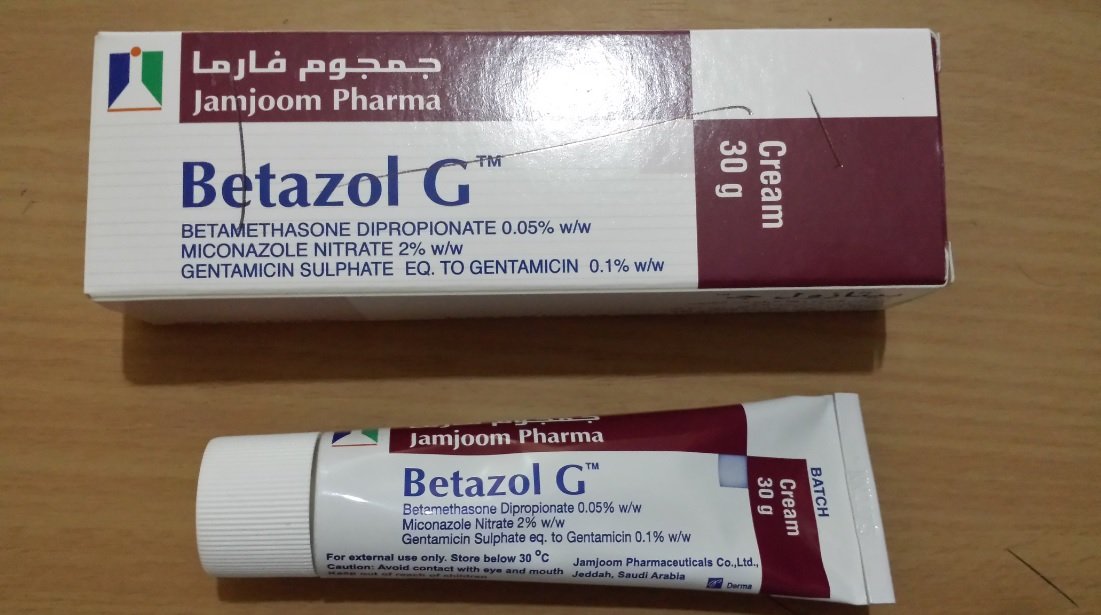
Related videos:
Q&A:
What is skin and nail fungus?
Skin and nail fungus is an infection caused by a fungus that affects the skin and nails. Symptoms can range from itching and flaking of the skin to cracking and discoloration of the nails.
How can you protect yourself from fungus?
Protect against fungus by maintaining nail hygiene, wearing shoes made from natural materials, avoiding other people’s shoes, avoiding public swimming pools and gym showers without shoes, and drying your feet after swimming or showering.
What are effective treatments for skin and nail fungus?
Effective treatments for skin and nail fungus are antimycotic drugs – in the form of ointments, creams, tablets, as well as treatment with folk remedies, such as tea tree oil or soda. But before using it is necessary to consult a doctor.
But before using it is necessary to consult a doctor.
Are there any restrictions in the treatment of skin and nail fungus?
Yes, there are. Some antimycotic drugs can interact with other drugs, so you should consult your doctor before use. Also, do not use medicines during pregnancy or breastfeeding without consulting a doctor.
Which group of antimycotic drugs should be used in the treatment of skin and nail fungus?
There are different groups of antimycotic drugs – imidazoles, triazoles, allylamines, polyenes, etc. The doctor, based on the characteristics of the disease and the patient’s health status, selects the most appropriate group.
Is it possible to completely cure skin and nail fungus?
Yes, it is possible. Timely access to a doctor, proper treatment and compliance with recommendations for prevention is the key to the correct and complete cure of skin and nail fungus.
How to get rid of foot fungus: effective treatments
Content
- 1 Effective ways to treat fungus on the feet: folk recipes and medicines
- 1.
 1 Signs of fungus on the feet
1 Signs of fungus on the feet - 1.2 Causes of fungal infection on the feet
- 1.3 Main types of fungus on the feet
- 1.4 Prevention of foot fungus
- 1.5 Simple treatments for toe fungus
- 1.6 Drug treatment for toe fungus
- 1.7 Injection treatment for toe fungus
- 1.8 Physiotherapy treatment of fungus on the feet
- 1.9 Folk remedies for the treatment of fungus on the feet
- 1.10 Surgical treatment of fungus on the feet
- 1.11 Tips for maintaining a healthy lifestyle to prevent fungus on the feet
- 1.11. 1 1. Maintain foot hygiene
- 1.11.2 2. Avoid wearing non-ventilated shoes
- 1.11.3 3. Wear custom shoes
- 1.11.4 4. Eating healthy and boosting immunity
- 1.11.5 5. See a doctor at the first symptoms
- 1.12 Related videos:
- 1.13 Q&A:
- 1.13.0.1 What are the symptoms of foot fungus?
- 1.13.0.2 How quickly can you get rid of foot fungus?
- 1.
 13.0.3 Is it possible to cure the fungus on the feet with folk remedies?
13.0.3 Is it possible to cure the fungus on the feet with folk remedies? - 1.13.0.4 How can foot fungus be prevented?
- 1.13.0.5 Is it possible to get a fungus on the feet in the pool?
- 1.13.0.6 Is it possible to get a fungus on the legs without itching and redness?
- 1.
Find out how to treat foot fungus with traditional methods and drugs. Be armed with knowledge to get rid of unpleasant symptoms and prevent the revival of the disease.
Fungal infections are one of the most common diseases that occur in humans. This disease can lead to serious complications if not treated on time. Foot fungus is one of the most common cases of fungal infection in the body, and those affected by this disease are looking for effective methods of treatment.
The appearance of a fungus is not a sign of the need to change your lifestyle. This disease is quite common among people of all ages and health levels, which in turn is associated with a lack of information about the methods of prevention and treatment of this problem.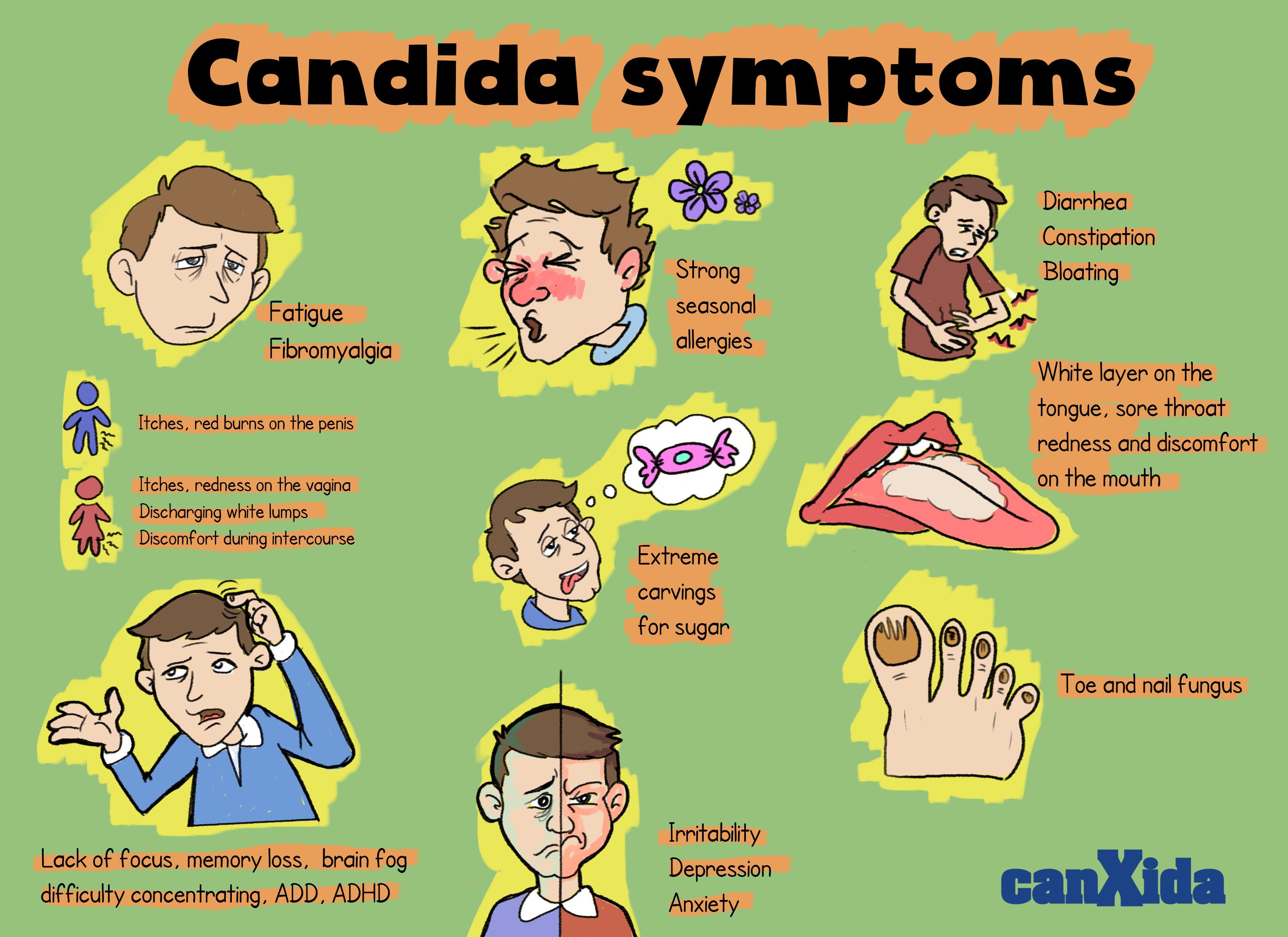
In this article we will talk about effective methods of treating fungus on the feet, which will help reverse this disease and get rid of it forever.
Signs of fungus on feet
Fungus on feet is a disease caused by a dermatophyte fungus. Such a fungus can affect not only the feet, but also other parts of the body, such as nails, hands, and even the head.
The main signs of fungus on the legs are itching and peeling of the skin. The skin may also be covered in small blisters, which may burst and become sores. With prolonged progression of the disease, the skin on the legs can become thicker and lose elasticity, as well as begin to flake off.
One of the most common symptoms of foot fungus is odor. Often this smell manifests itself after physical exertion and turns into unpleasant sensations of burning and itching.
- Itching and peeling of the skin
- Sores and blisters
- Thick, peeling skin on the legs
- Smell and burning on the skin
If you notice these signs on your skin, it is worth contacting a specialist and start appropriate treatment.
Causes of foot fungus
Foot fungus is a common disease caused by various fungal species. Anyone can develop this disease, but it most often develops in people who regularly go to public places without shoes or wear uncomfortable shoes.
In addition, some people may be more susceptible to developing a fungal infection on their feet, such as people who are immunocompromised or have diabetes. Foot fungus can be contracted from another person if their shoes or towels are used. Discomfort and burning in the foot area, cracks, itching of the heels – all these are signs of the development of a fungal infection.
Factors contributing to the development of fungus: Factors Notes
| Humidity | High humidity, for example at the beach, in the bathhouse, in public showers, by the pool, increases the risk of infection with fungus on the feet. |
| Tight shoes | Shoes that press and squeeze the feet can cause fungus to develop. |
| Family history | If family members have had a fungal infection, then other family members are at risk of infection. |
The main types of fungus on the feet
Fungus on the feet is a common disease that can have various forms and manifestations. The most common are dermatophytosis, they are also mycoses of the foot and nails. They cause itching, flaking of the skin, flaking, cracking and bad smell.
Another type of foot fungus is candidiasis. It is characterized by the appearance of a white coating on the skin, between the fingers and around the nails. In addition, itching and redness may be associated symptoms.
The third type of foot fungus is lichen planus. It manifests itself in the form of red, spotty formations on the skin of the foot and nails. Itching and flaking of the skin may occur.
It is important to remember that fungal infections can be easily transmitted from person to person, so the first signs should be consulted with a dermatologist immediately and treated immediately.
Prevention of foot fungus
Fungal diseases of the feet are common and can affect anyone, but prevention can help keep feet healthy.
- Take good care of your feet. Wash your feet daily with warm water and a degreaser. Scrub the skin between the toes and under the nails with a toe brush.
- Avoid dry feet. To do this, use wet wipes, creams and softening ointments.
- Choose your shoes carefully. Wear shoes that are the correct size and are made from breathable materials. Change your socks every day.
- Do not walk barefoot in public places. Use individual slippers in the pool, sauna or changing room at the gym.
- Do not share personal foot care items. Use your own scissors and nail files, don’t share them with other people.
These simple tips will help keep your feet healthy and prevent fungal foot infections. In case of symptoms of foot fungus, you should immediately consult a doctor.
Easy ways to treat toe fungus
Toe fungus is a common disease caused by a fungus of the genus Trichophyton or Epidermophyton. It manifests itself in the form of itching, keratinization, peeling and cracks between the fingers, as well as the appearance of painful blisters on the feet.
It manifests itself in the form of itching, keratinization, peeling and cracks between the fingers, as well as the appearance of painful blisters on the feet.
The first step in treating foot fungus is to choose the right shoes and socks that do not create a greenhouse environment for the fungus to grow. It is also important not to walk barefoot in public places, to keep your feet clean and dry.
- Honey treatment. Honey contains antibacterial and anti-inflammatory properties. It can be applied to the affected areas of the skin and wrapped with a bandage at night.
- Herbs for fungus. Some herbs, including garlic and tea tree, have antifungal properties. They can be used as tinctures or essential oils for regular use.
- Professional treatment. If home methods fail, it is recommended to consult a suitable physician. Most fungal infections can be treated with antimycotic ointments and tablets prescribed by a doctor.

Regardless of which method of treatment for foot fungus you choose, the main thing is to continue to follow it until it is completely cured in order to avoid a recurrence of the disease.
Drug treatment of foot fungus
Foot fungus is a serious disease that requires timely and high-quality treatment. One of the most effective ways to deal with this problem is medication.
Topical preparations include creams, ointments and solutions for external use. They are applied to the affected areas of the skin and nails and contribute to the rapid destruction of fungi.
Systemic medicines are given in more severe cases when topical medicines fail to control the disease. These drugs are taken orally and act on the body as a whole, eliminating the fungal infection.
- When treating foot fungus with medication, you should follow the rules of hygiene and additionally use special products for disinfecting shoes and personal hygiene items.

Injection treatment for foot fungus
Injections are one way to treat foot fungus. It is used in cases where external methods of treatment are not effective enough.
The main drug used for injection therapy of fungus is terbinafine. This drug inhibits the growth of fungal cells, destroying them.
Terbinafine injections are prescribed by a physician and administered under supervision. The course of treatment can last from several weeks to several months.
- Injection treatment is a method that helps to get rid of the fungus even in cases where other methods are not effective.
- Terbinafine is the main drug used for injection.
- Injections are given under the supervision of a doctor and the course of treatment may last several weeks or months.
Physiotherapy treatment for foot fungus
Physiotherapy is an additional treatment for foot fungus that helps to get rid of the disease faster and reduce the total dose of medications taken.
One of the effective methods of physiotherapy is Pimafucinom electrophoresis. This allows you to achieve a higher level of drug concentration in the affected tissue, which speeds up the healing process. The procedure is painless and does not cause any side effects.
Local ultrasound treatment of toe fungus also gives good results. The procedure is suitable for everyone, and especially for those who have contraindicated drugs for oral administration. Local ultrasound treatment has a powerful antifungal effect. This is a safe method of treatment that does not require the start of a course of treatment and gives a visible effect after the first procedure.
Mud applications are well known for their antifungal properties. Topical application of mud to the affected nail can help improve circulation and speed up the healing process at the cellular level. The right mud can also help ease inflammation and reduce swelling. There are tick, peat, bluish-white and other types of mud.
There are tick, peat, bluish-white and other types of mud.
Folk remedies for the treatment of fungus on the feet
In folk medicine, there are many recipes for the treatment of fungus on the feet. Here are some of them:
- Water-salt bath. Dissolve 2 tablespoons of sea salt in 1 liter of hot water and soak your feet in it for 20 minutes. Repeat the procedure daily.
- Garlic infusion. Crush 3 garlic cloves and pour a glass of boiling water over them. Leave to brew overnight and lubricate the affected areas with the resulting infusion.
- Essential oils. Add 2-3 drops of tea tree, lavender or rosemary essential oils to bath water. The procedure should be performed daily.
Remember that folk remedies are not a panacea and do not replace professional treatment by a dermatologist or mycologist. If the symptoms do not disappear, be sure to consult a specialist.
Surgical treatment of fungus on the feet
If you have a fungus on your feet, you should immediately consult a doctor who will prescribe the appropriate treatment.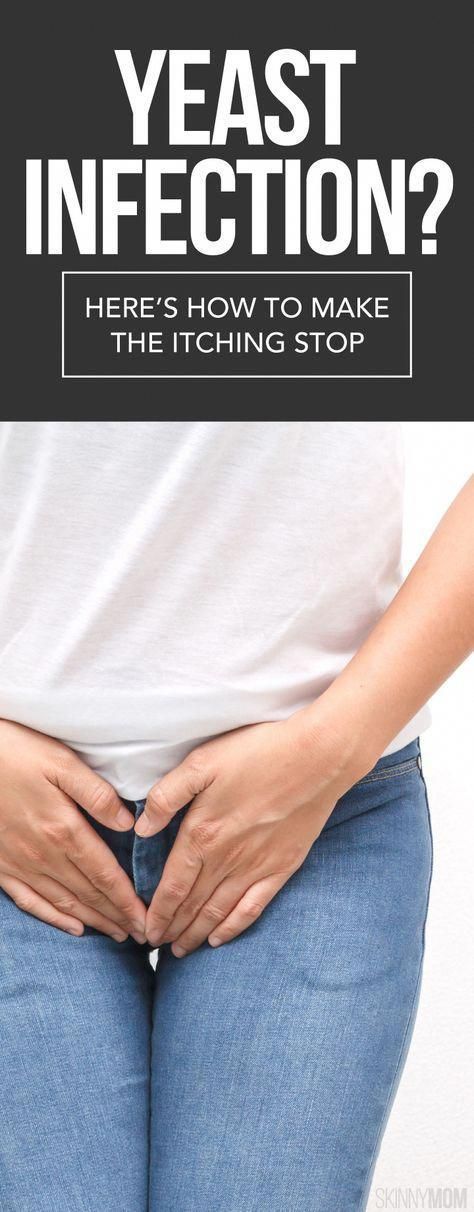 In the case of severe and advanced forms of the fungus, surgery may be required.
In the case of severe and advanced forms of the fungus, surgery may be required.
In cases where conservative treatment fails, the doctor may decide to perform surgery to remove the affected tissue. This will get rid of the fungus on the feet and prevent further spread of the infection.
- The operation is performed under local anesthesia.
- During the operation, the affected nail plates and skin are removed.
- There are a number of wound care guidelines to follow after surgery.
In addition to surgery, your doctor may prescribe antifungals and topical ointments to treat fungal infections. It is important to remember that self-medication can lead to complications and worsening of the condition, as well as to the further spread of the infection.
Healthy living tips to prevent foot fungus
1. Maintain foot hygiene
Wash your feet regularly with warm water and degreasing soap, remembering to wipe the folds between the toes and between the toes. To prevent fungus, make sure that the feet are completely dry and treat them with a specialized spray or powder.
To prevent fungus, make sure that the feet are completely dry and treat them with a specialized spray or powder.
2. Avoid non-ventilated shoes
To prevent fungal infections on your feet, wear shoes that keep your feet dry and comfortable. Avoid synthetic materials and prefer natural fabrics such as leather, suede and cotton.
3. Wear custom shoes
Shoes are personal items that do not need to be loaned to or borrowed from other people. Wearing shared shoes can lead to the transmission of fungal infections. Be careful when visiting public places, use individual slippers or shoes.
4. Healthy nutrition and immunity
Eat foods fortified with vitamins and minerals such as vitamin C, E, B, zinc, iron and magnesium. These nutrients strengthen your body’s immunity, making it less vulnerable to fungal infections.
5. See a doctor at the first symptoms
If you notice a change in the color or texture of the nail plate or the skin on your feet, consult your doctor. Seeing a specialist early will help prevent the fungal infection from spreading to other parts of the body and other people.
Seeing a specialist early will help prevent the fungal infection from spreading to other parts of the body and other people.
Related videos:
Q&A:
What are the symptoms of foot fungus?
Fungus on the legs is usually accompanied by itching, peeling, redness of the skin, the appearance of cracks, a sharp pain reaction is possible when pressing on the affected area. The fungus can lead to a deterioration in the appearance of the nails and their detachment.
How quickly can you get rid of foot fungus?
The treatment time for toe fungus depends on the severity of the disease, but the average duration of treatment is from several weeks to several months. There are various methods of treatment, but the most effective treatment is a comprehensive approach that includes local and systemic use of drugs, the use of specialized cosmetics, compliance with hygiene measures and the rules for preventing recurrence of the disease.
Can foot fungus be cured with folk remedies?
Folk remedies can be used as an additional treatment, but cannot replace the full medical treatment of foot fungus. For example, you can use the treatment of diseased nails with an infusion of garlic or drink tea with calendula, but you should not completely rely on folk methods and refuse to consult a doctor and use medications.
How can foot fungus be prevented?
It is important to follow hygiene measures, provide your feet with a dry environment, do not wear too tight and tight shoes, periodically treat shoes with special antiseptics, avoid visiting public places with our air-conditioned atmosphere barefoot, systematically carry out hygiene procedures and disinfection of surfaces in the house.
Is it possible to get a fungus on the feet in the pool?
Yes, hygiene is very important when visiting public places such as swimming pools. The fungus on the feet is transmitted through contact with a sick person or through infected surfaces and objects.



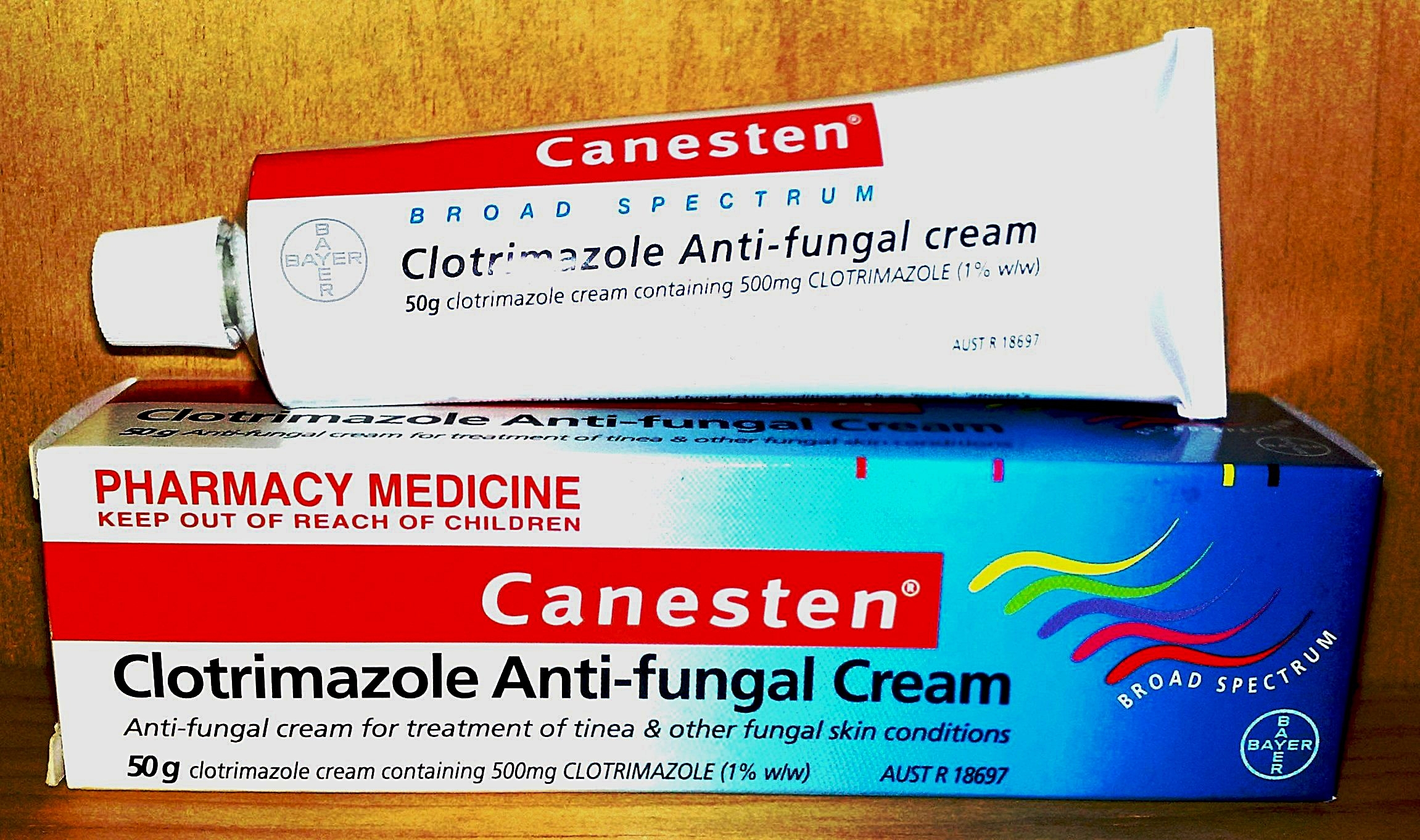 2019 Mar-Apr;85(2):197-200. [PubMed: 30719987]
2019 Mar-Apr;85(2):197-200. [PubMed: 30719987] Guidelines/Outcomes Committee. American Academy of Dermatology. J Am Acad Dermatol. 1996 Feb;34(2 Pt 1):282-6. [PubMed: 8642094]
Guidelines/Outcomes Committee. American Academy of Dermatology. J Am Acad Dermatol. 1996 Feb;34(2 Pt 1):282-6. [PubMed: 8642094]

 8.3 Benefits of using our products in the treatment of fungus in children
8.3 Benefits of using our products in the treatment of fungus in children The use of such products helps to prevent the development of fungus on the skin and nails.
The use of such products helps to prevent the development of fungus on the skin and nails.

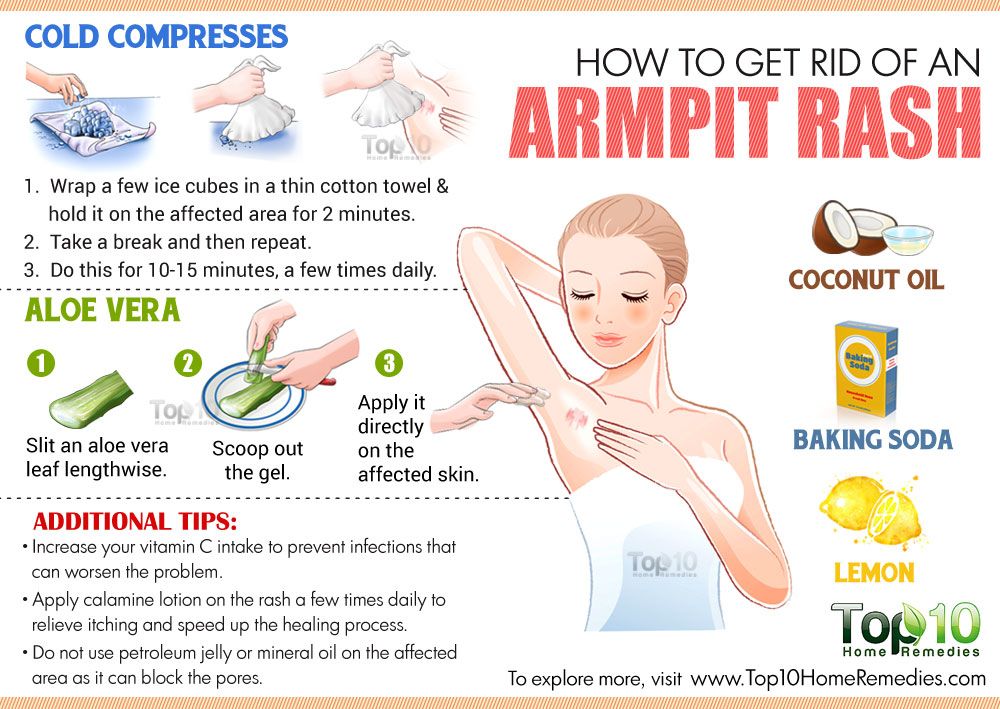 1 Signs of fungus on the feet
1 Signs of fungus on the feet 13.0.3 Is it possible to cure the fungus on the feet with folk remedies?
13.0.3 Is it possible to cure the fungus on the feet with folk remedies?